“I am not what happened to me,
I am what I choose to become.”
Carl Jung and Types
Carl Jung, a Swiss psychologist based in Zurich, observed 4 dimensions of preferences resulting in 16 different psychological types.
The four dimensions of preferences are:
Where do you draw your Energy? Extrovert or Introvert
How do you process Information? Sensing or iNtuition
How do you make Decisions? Thinking or Feeling
What is your preferred Lifestyle? Judging or Perceiving
Note that these are preferences. Your preference may be introversion and solitude, but you can still be able to participate in events with people and enjoy it.
A quick summary of the four preferences follows. To learn more, view the slide show below: Teams & Type.
Where Do You Draw Your Energy?
Extroverts are energized through contact with other people and by engaging in activities (the outer world).
Introverts are energized through ideas or solitude (the inner world).
How Do You Process Information?
Sensing types prefer paying attention to what is perceived through the five senses: seeing, hearing, touching, smelling, and tasting.
Intuition types prefer to pay attention to what is sometimes described as the sixth sense—the unseen world of hunches and insights.
How Do You Make Decisions?
Thinking types prefer to make decisions based on cause and effect reasoning and logic.
Feeling types prefer to make decisions based on values and person-centered criteria, seeking harmony.
How Do You Approach Life?
Judging types prefer to live an ordered life with goals and structures. Judging types are energized by checklists and checking items completed on the list. Js revel in the joy of closure.
Perceiving types prefer to live a spontaneous life with flexibility, staying open to new possibilities. Perceiving types may not start a project until the deadline date because they want to keep their options open. Ps revel in the the joy of processing.
Jung’s Observations About Type Preferences
Jung observed some of these preference characteristics in children as young as three years old, leading him to question whether some of these characteristics are biological in nature. This has been born out now that we have more advanced imaging technology. For example, scans of cerebral activity in extroverts and introverts show a marked difference.
Introverts with no external stimuli show a higher level of cerebral activity as compared to extroverts.
Extroverts, showing a lower level of cerebral activity without external stimuli, show a higher level of cerebral activity when exposed to external stimuli. Interestingly, the introvert when exposed to external stimuli shows an even higher level than the extrovert.
So an introvert may be overwhelmed by cerebral activity when exposed to external stimuli and need to withdraw to more calming surroundings, limiting exposure to external stimuli.
An introvert may be more productive alone on a mountaintop or tranquilly relaxing on a quiet beach.
An extrovert on the other hand may need the external stimuli to generate or fire up cerebral activity. For example, one college student found he had to be in a loud busy pub surrounded by people in order to write his college term papers. Sitting quietly in a corner by himself to study was nonproductive.
Jung contended that we start out with a given preference for each of the four dimensions, but as we age, we can develop the other dimensions that are less preferred. For example, a T (Thinking Type) who prefers making decisions using logic and reason, as time passes may begin to develop the F (Feeling) dimension and begin to make decisions considering how people are affected by the decision.
4 Preferences = 16 Types
Combining the 4 preferences yields 16 types, identified by the following 4-letter codes:
ISTJ
ISFJ
INFJ
INTJ
ISTP
ISFP
INFP
INTP
ESTP
ESFP
ENFP
ENTP
ESTJ
ESFJ
ENFJ
ENTJ
What’s Your Type?
What’s your 4-letter Type? Two ways to find your four-letter Type results:
Go to https://www.humanmetrics.com/personality/test and complete a free Jung Typology survey. You will be provided with a 4-letter Type, one of the 16 possible types identified by Carl Jung.
Your other option is to locate and take a Myers-Briggs Type Indicator (MBTI) survey or an Expanded MBTI survey. There is usually a fee to obtain the MBTI and typically the results are similar to the free human metrics survey.
After you have obtained your 4-letter Type, proceed to the slide show below to learn more about Type.
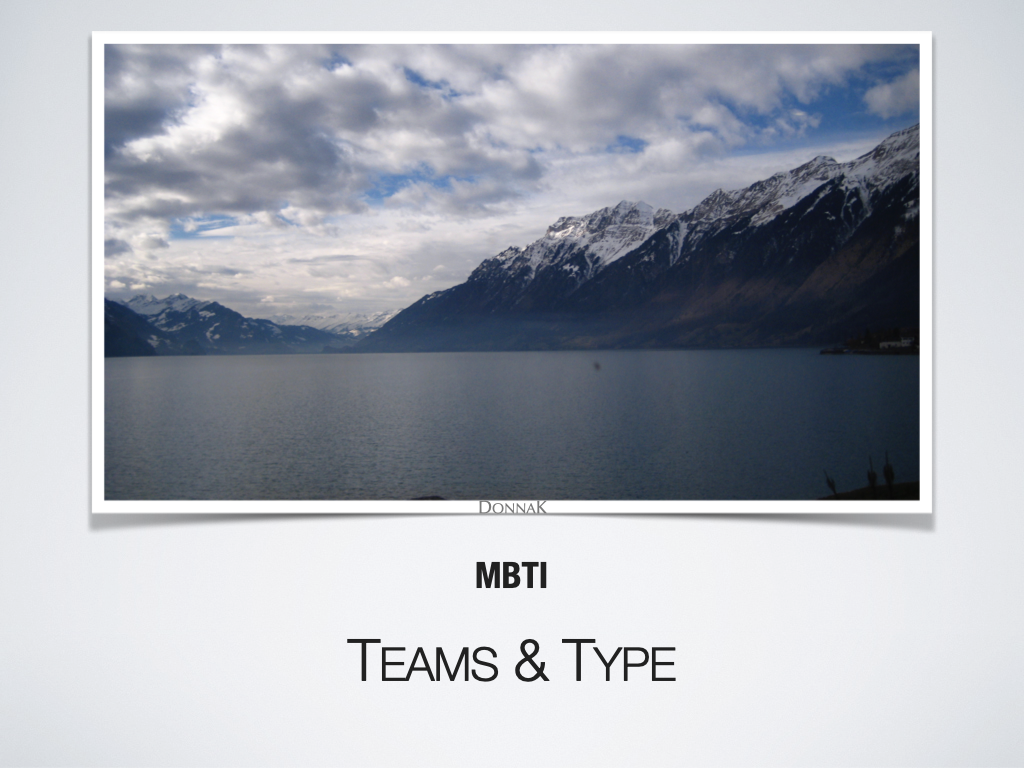


























“Many destructive conflicts arise simply because two people are using
opposite kinds of perception and judgment.
When the origin of such a conflict is recognized,
it becomes less annoying and easier to handle.”
Using Type to Navigate the Storming Milestone
One of the most useful tools a team can use when navigating the Storming stage is using Type to understand better team interactions.
We often start with the assumption that everyone perceives and processes information the same way that we do. Understanding Type sheds light on how others perceive and process information so we can build upon gifts differing within a team.
For example, Ts (Thinking) have a preference for seeing the negative. Ts may describe it as the one item that is wrong on a page of 100 items jumps out to them. A T may not mention the 99 other items that are correct. Instead, focusing on the 1 item that is wrong. This can be a good news/challenge news situation for a team.
The Good news: The gift of having Ts on your team is that they will ferret out any errors or mistakes before anyone outside the team sees them. This is great if you are working with a team of tax accountants, for example.
On the other hand, the person who spent hours preparing the page of 100 items may feel discouraged when the T only wants to talk about the 1 item that was wrong and fails to acknowledge the other 99 items that are correct.
Sometimes Ts need to be gently reminded to start with the positive. Mention the 99 items that are correct. And then move on to the 1 item that needs to be corrected.
Another example is that Fs (Feeling) tend to see the positive. On the page of 100 items, the F may only see the 99 correct items, not even aware that there is 1 incorrect item on the page. Their excitement over the 99 correct items will be their focus. Again, for a team, this is a good news/challenge news situation.
The Good news: The gift of having Fs on your team is that they will often be cheerleaders for the team, focusing on the positive outcomes and benefits. On the other hand, this can be a weakness for the team if the F is unable to focus on the negative or wrong items that need to be addressed.
Sometimes Fs can be guided to have a T review their work product. This makes the T feel valued for a trait that is sometimes underappreciated in a team environment.
The difference between the negative focus of Ts and the positive focus of Fs demonstrates why type preferences with gifts differing make a team strong. Having both Ts and Fs on a team is the best of both worlds, especially if they are aware of their gifts and are able to understand and respond to the gifts and sensitivities of other preferences.
ISTJs and Teams
First, every one of the 16 types has the ability to perform well in an effective team. An understanding of type can greatly enhance the high performance of an effective team.
ISTJs and teams require a special mention. There is one type that is typically most resistant to working in teams: ISTJ. The natural preference of the ISTJ is to not work in a team. Actually, an ISTJ can be adept at finding reasons not to work as a team, preferring to fly solo instead.
Some research has shown a higher incidence of teams becoming stalled in Storming with ISTJs. An ISTJ’s actions may be viewed as sabotage by other team members. While other team members may view an ISTJ as “controlling”, the ISTJ may see it as “keeping the team on track.”
Teams with ISTJs have the ability to go from Storming straight to Adjourning at lightning speed. This often suits the ISTJs because they prefer not to work in a team and an adjourned team solves that issue for an ISTJ.
Interestingly, while ISTJs typically prefer not to work in teams in general, ISTJs appear to especially prefer not to work in a team with other ISTJs. Research has also shown that ISTJs who are in a team environment with Fs, who try to understand them and have patience with their team struggle, can actually reach the point where the ISTJ may decide teams are not so bad after all.
An understanding of the team struggle of ISTJs and sensitivity to this situation can provide the opportunity for the team to still reach the state of an effective, high performing team. ISTJs can be highly productive team members if they feel understood and accepted by the team.
Innovative Teams and Type
Do you recall one of the greatest Secrets of Innovative Teams? The importance of not critiquing when creating innovative ideas?
Now that you know something about Types, which Type do you think will have the greatest challenge at not being critical of new ideas? Which Type will prefer to find the negative for any idea that is shared with the team?
If you picked Ts, you are absolutely on target. As mentioned, Ts have a preference for finding the negative—that can be their greatest talent and contribution to a team. However, for an innovative team, it can be the greatest obstacle to creating innovative ideas.
What to do if you have Ts on your Team? When they see a negative, before they say what is negative, they must find a way to improve the idea to address the negative they see. And then share. This continues the environment that nurtures creativity without shutting down the valuable contributions that Ts can make to continual improvement.
“Extraverts... cannot understand life until they have lived it.
Introverts... cannot live life until they understand it.”
Who’s in Your Tent?
Your General or Your Aide?




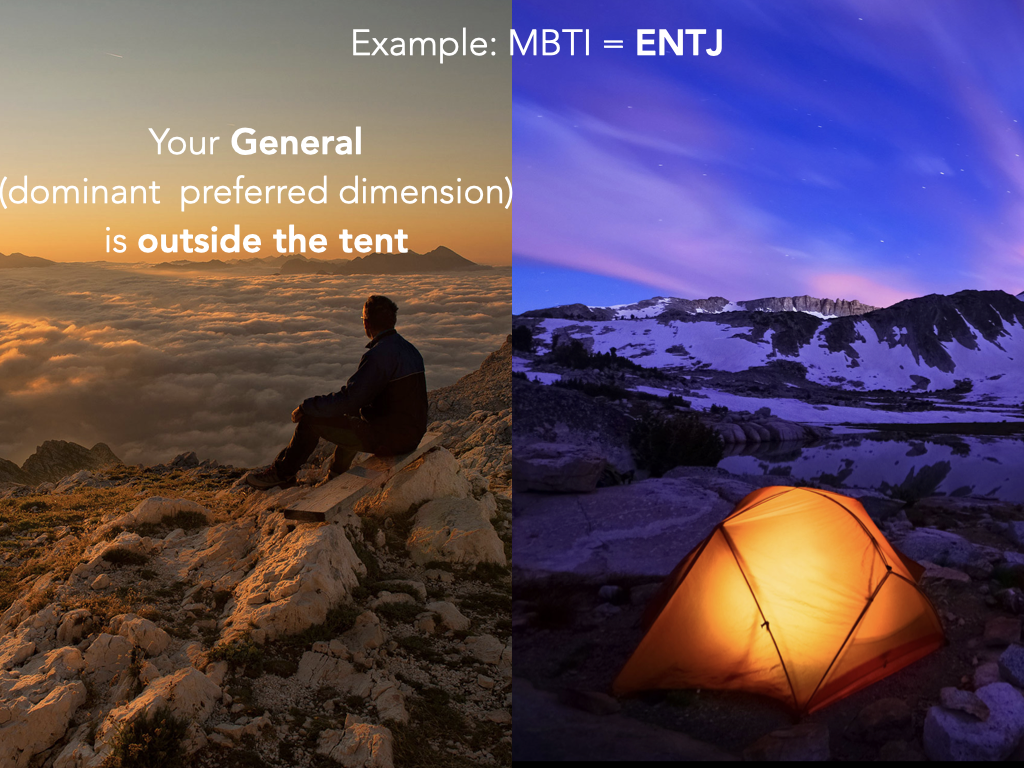






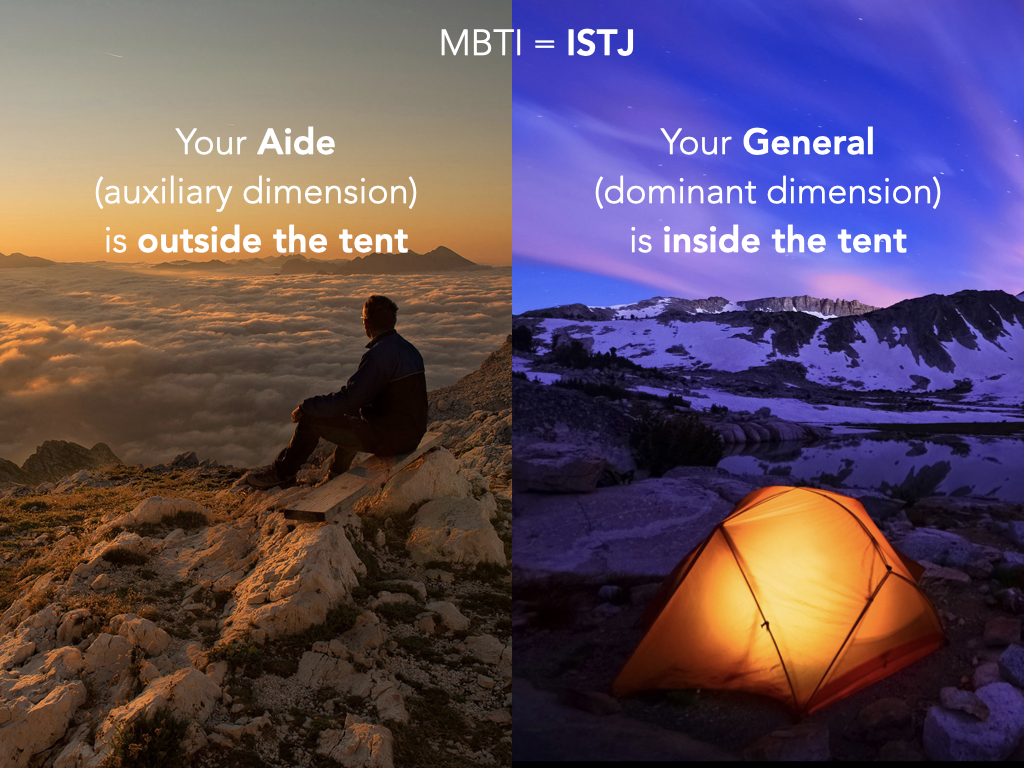


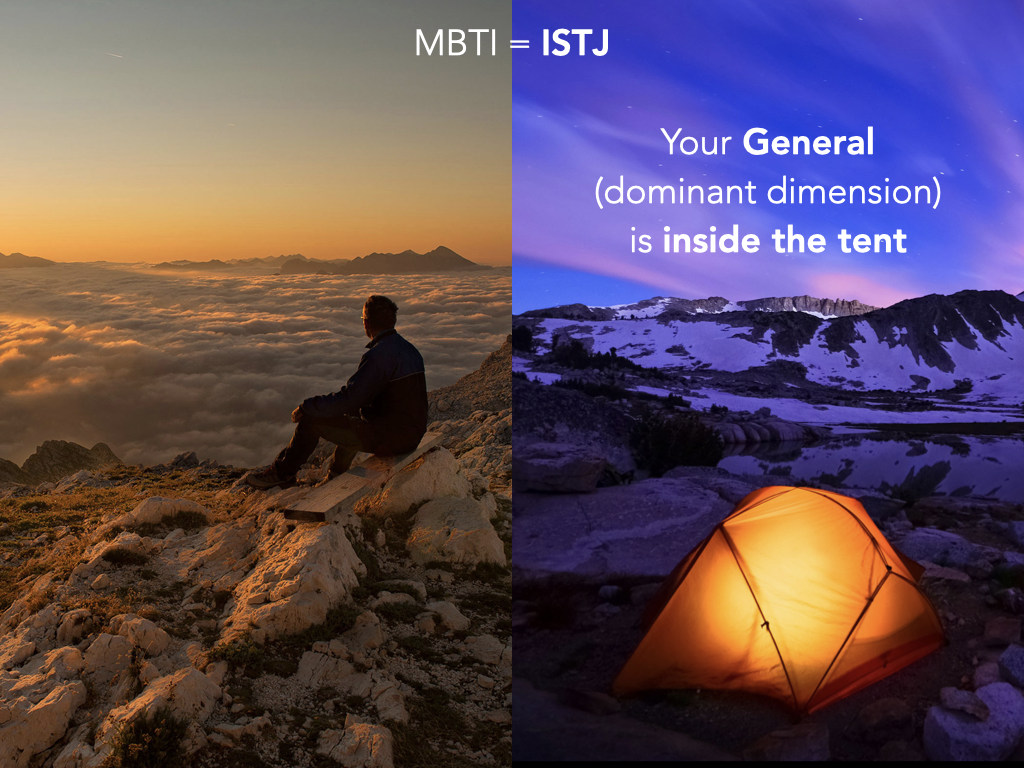



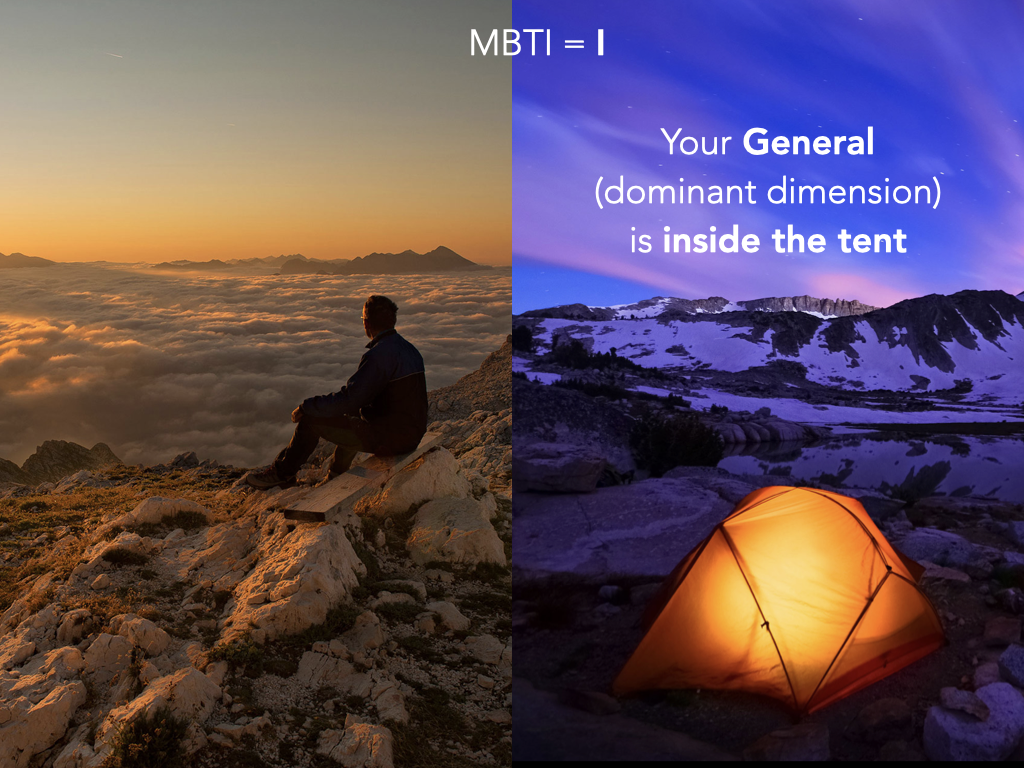




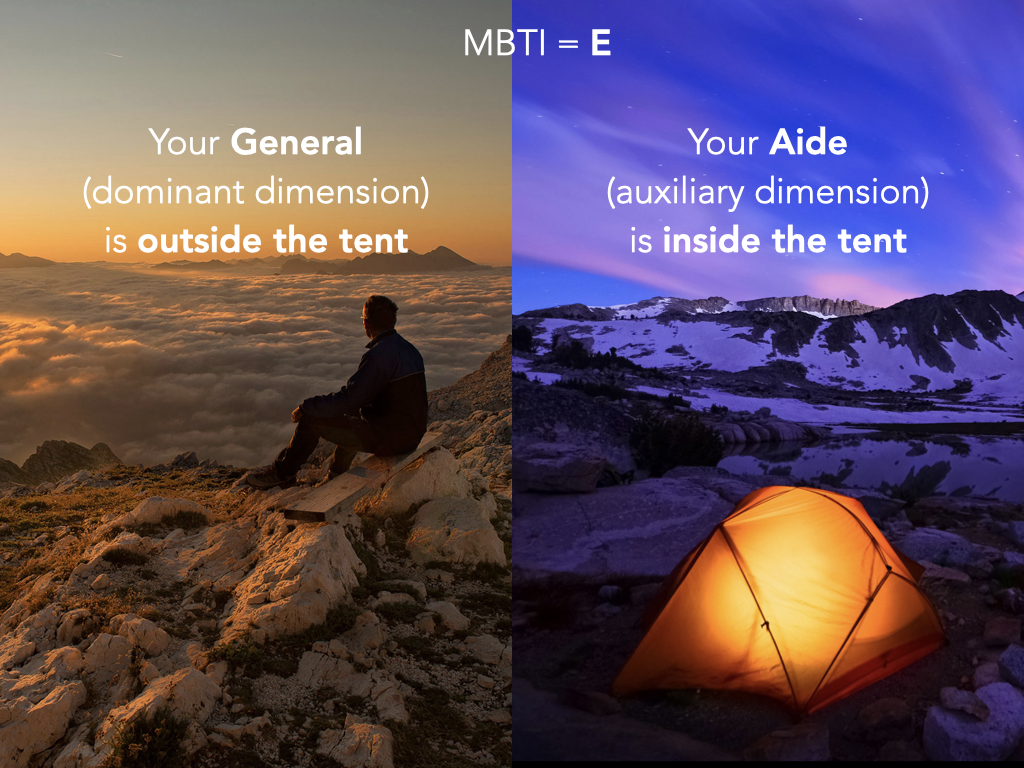

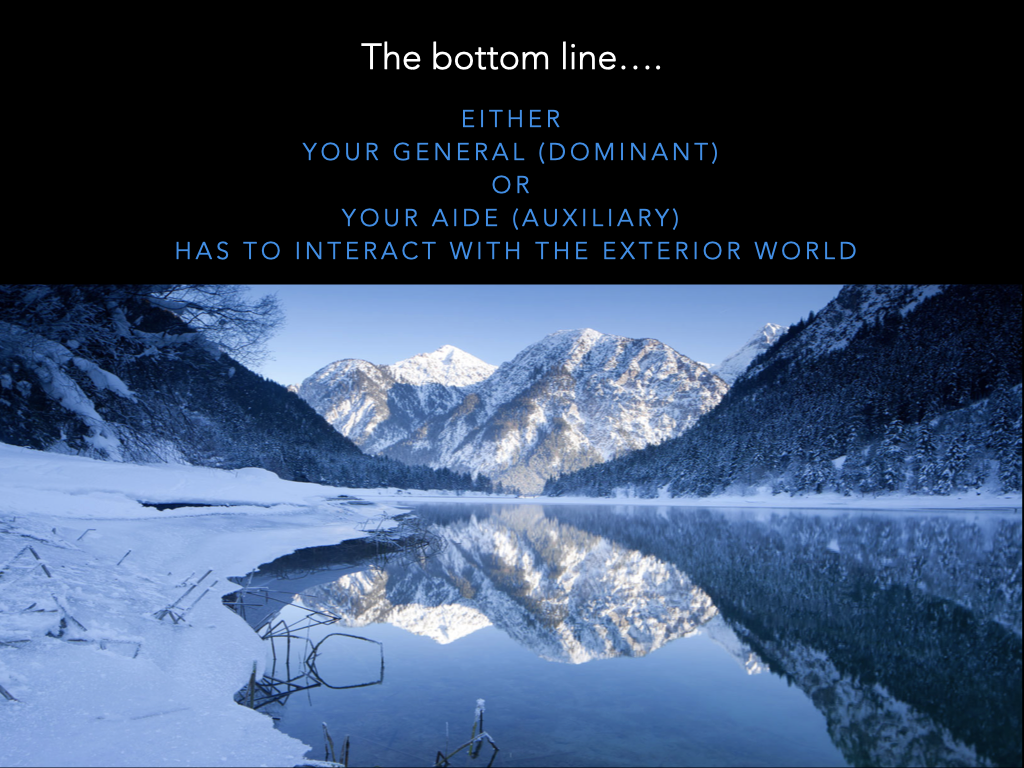


Who’s in Your Tent?
Which Type Dimensions Are in Your Tent?

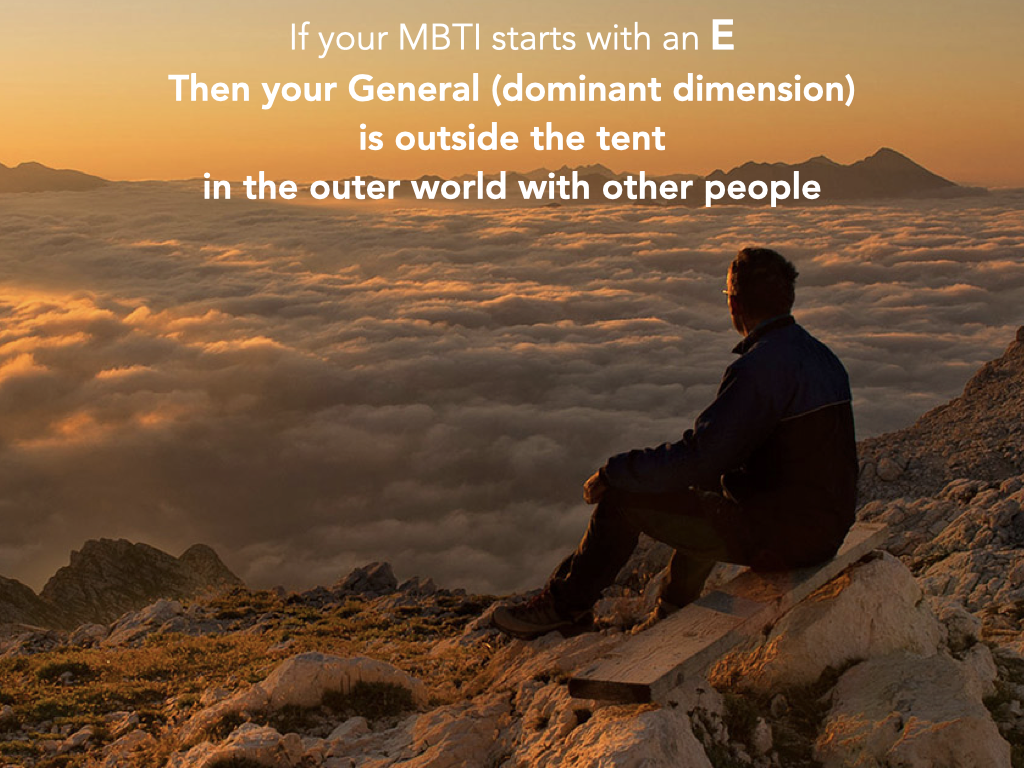
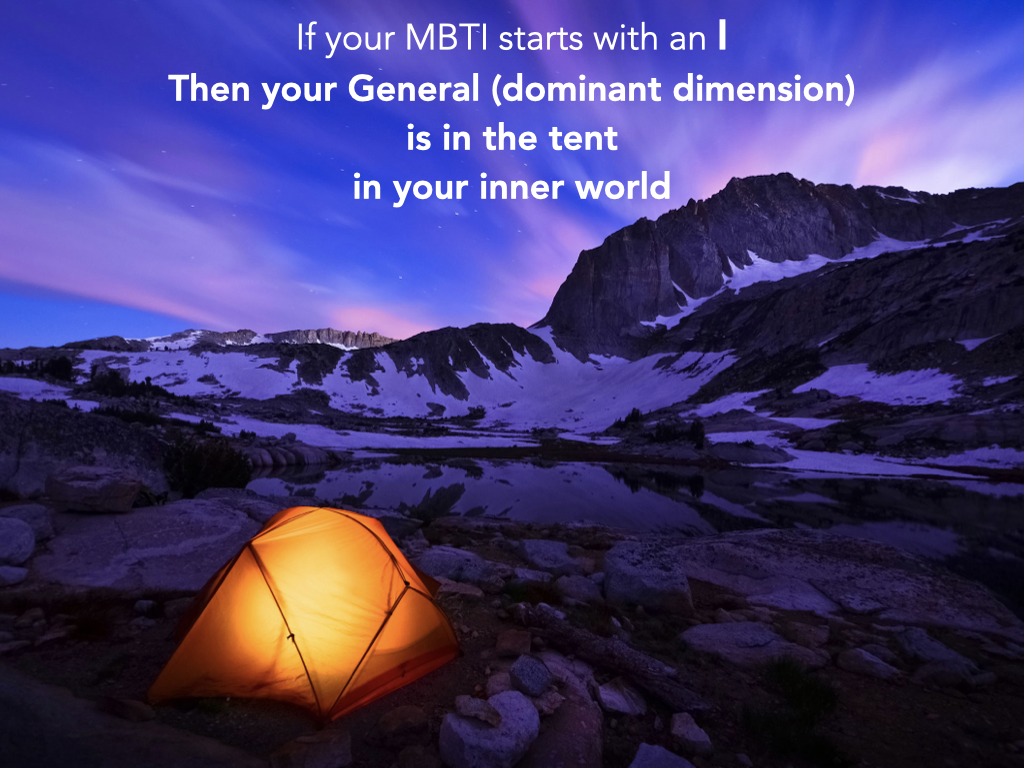
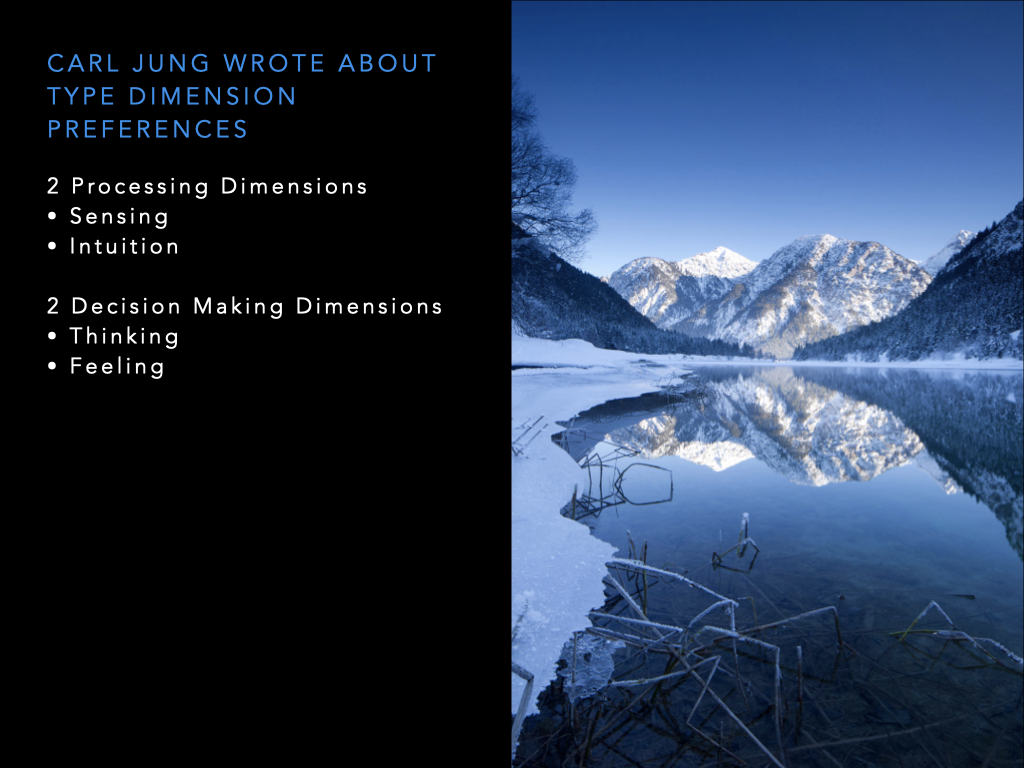
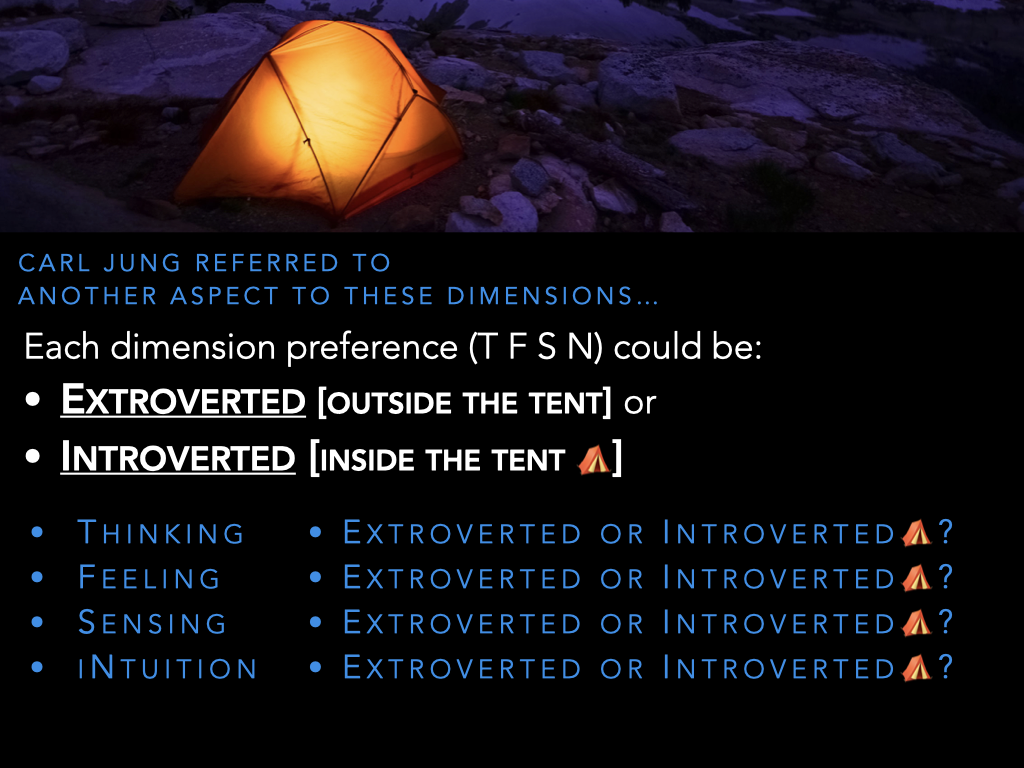
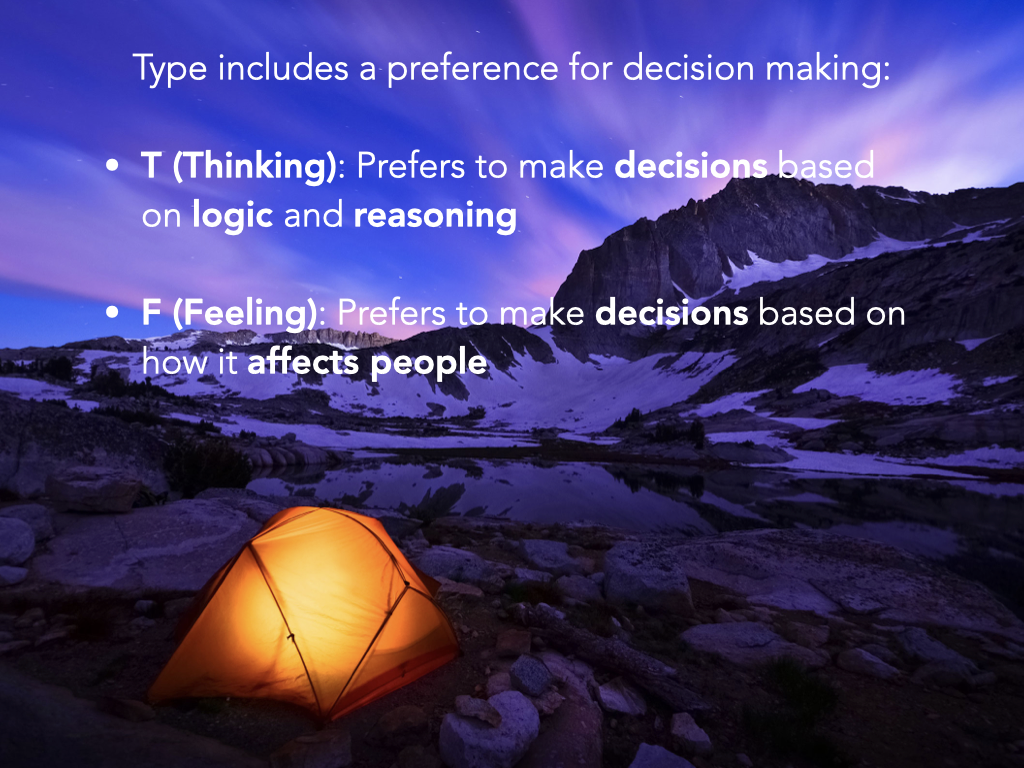
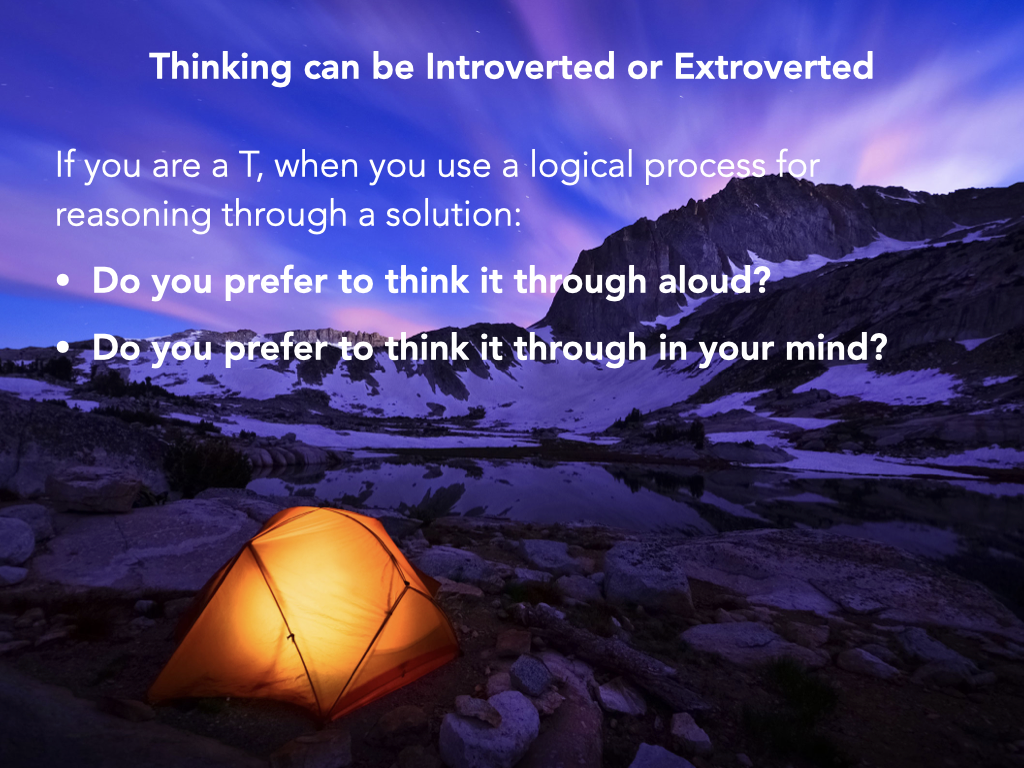




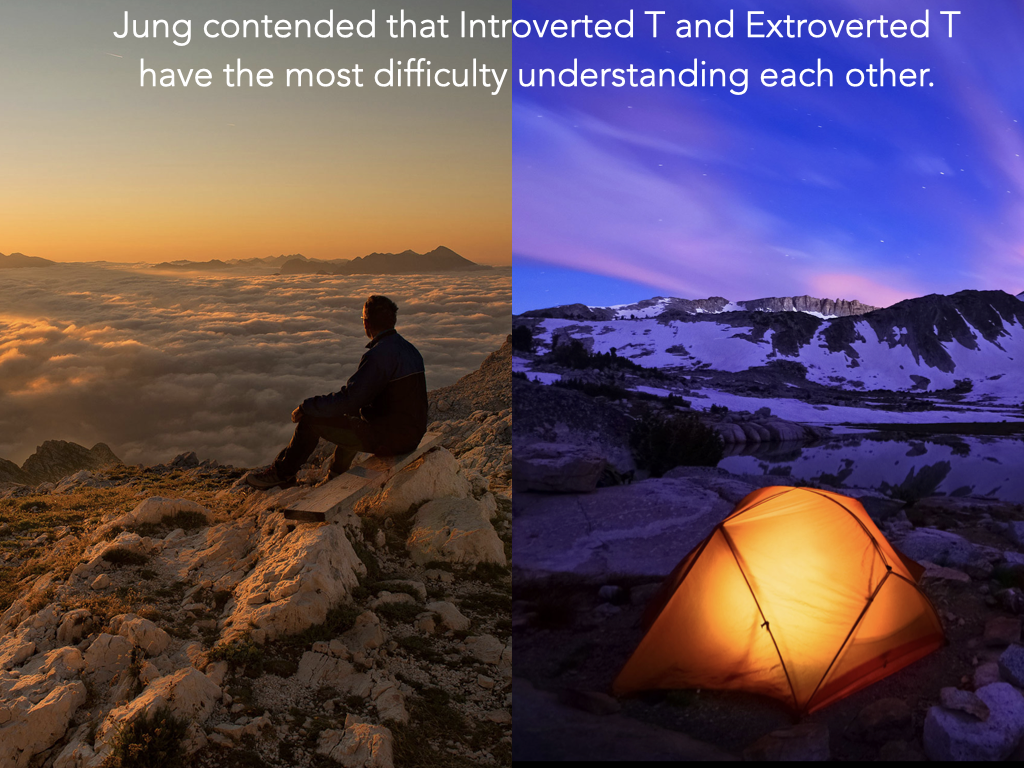

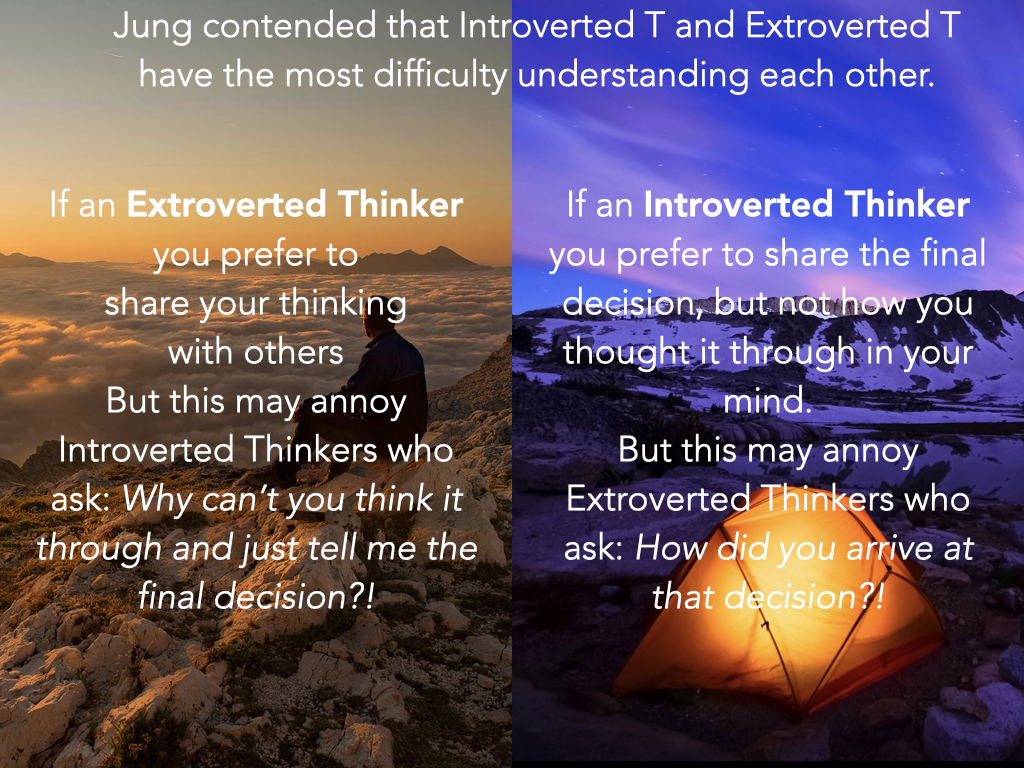
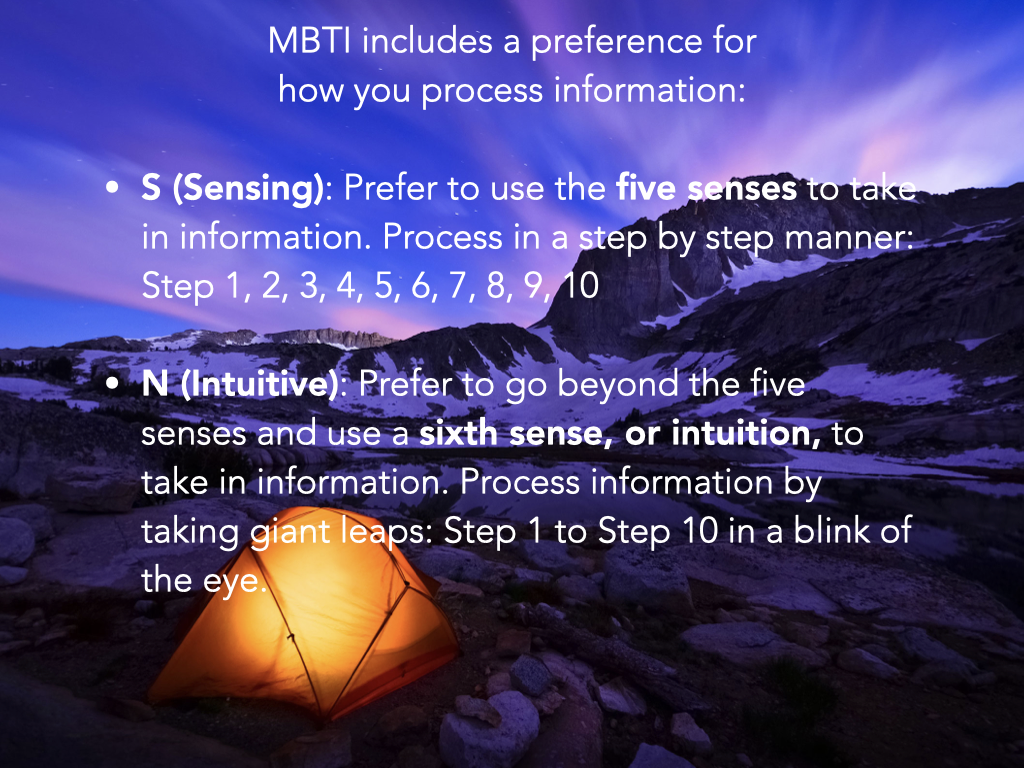

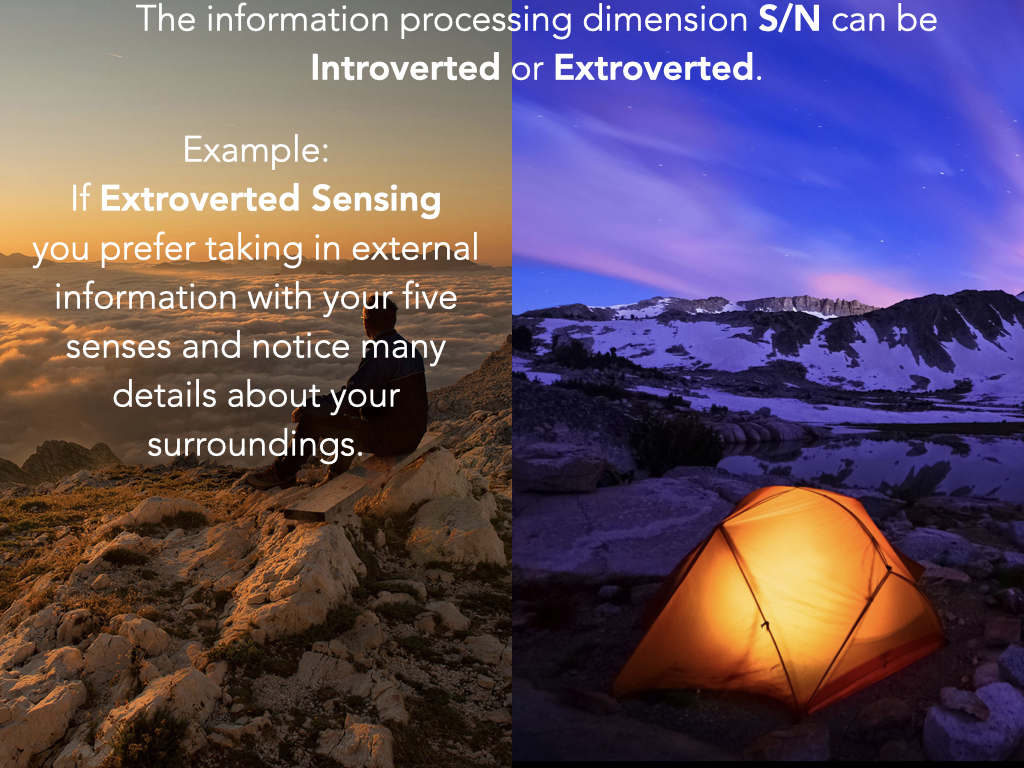
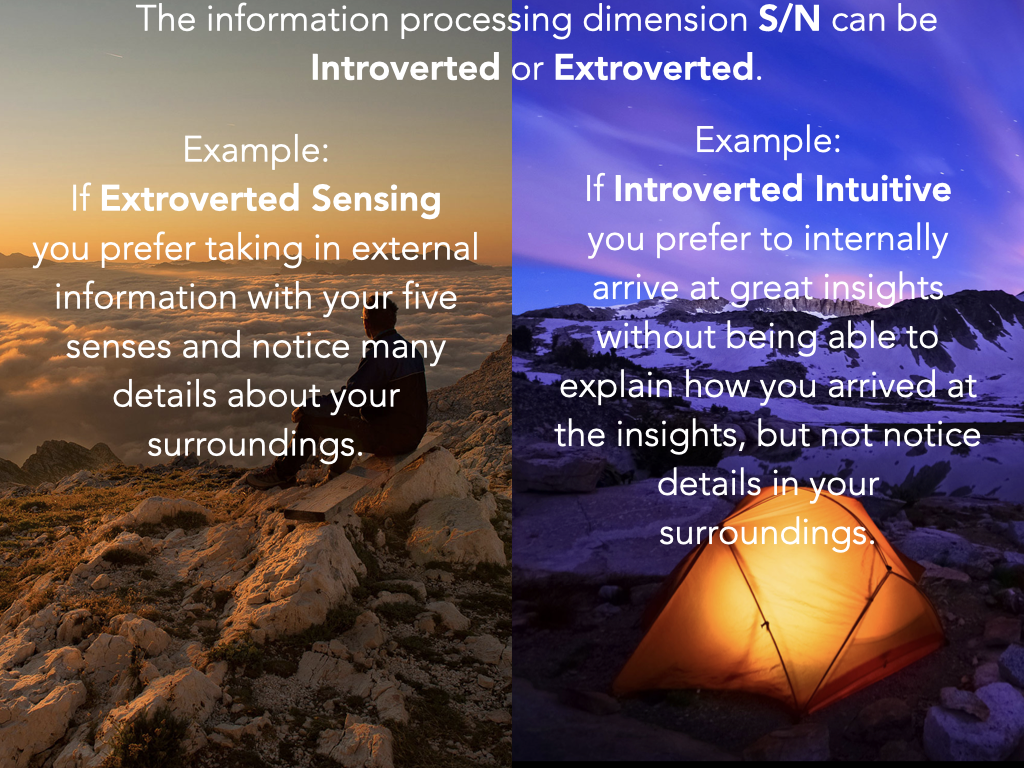
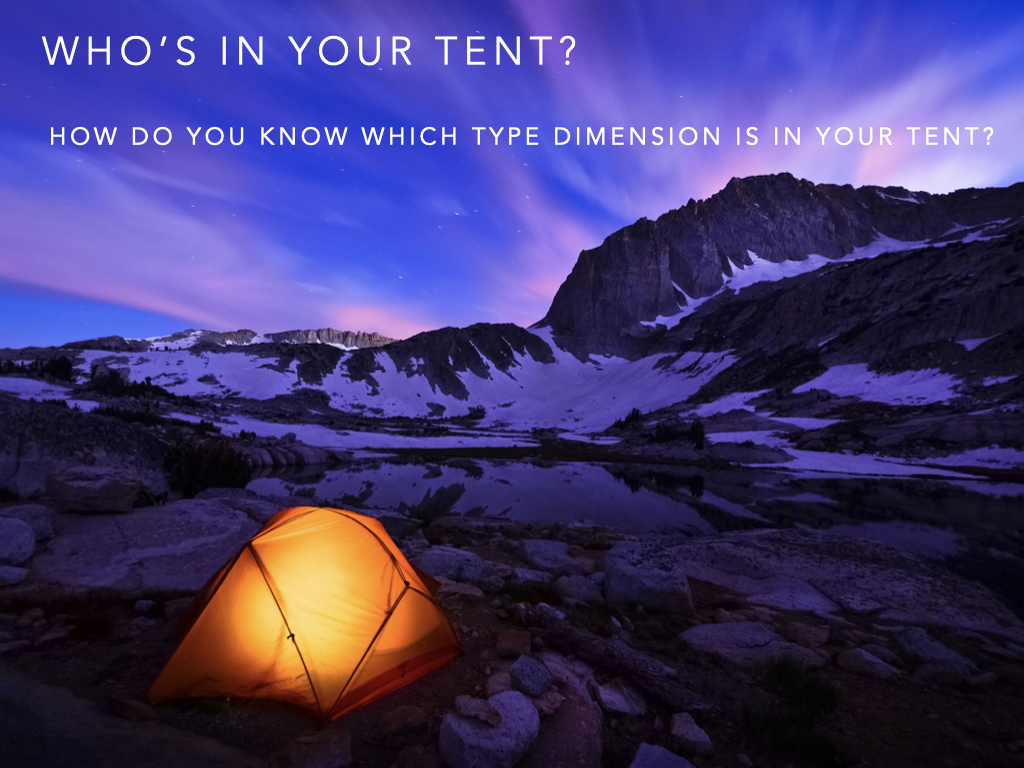
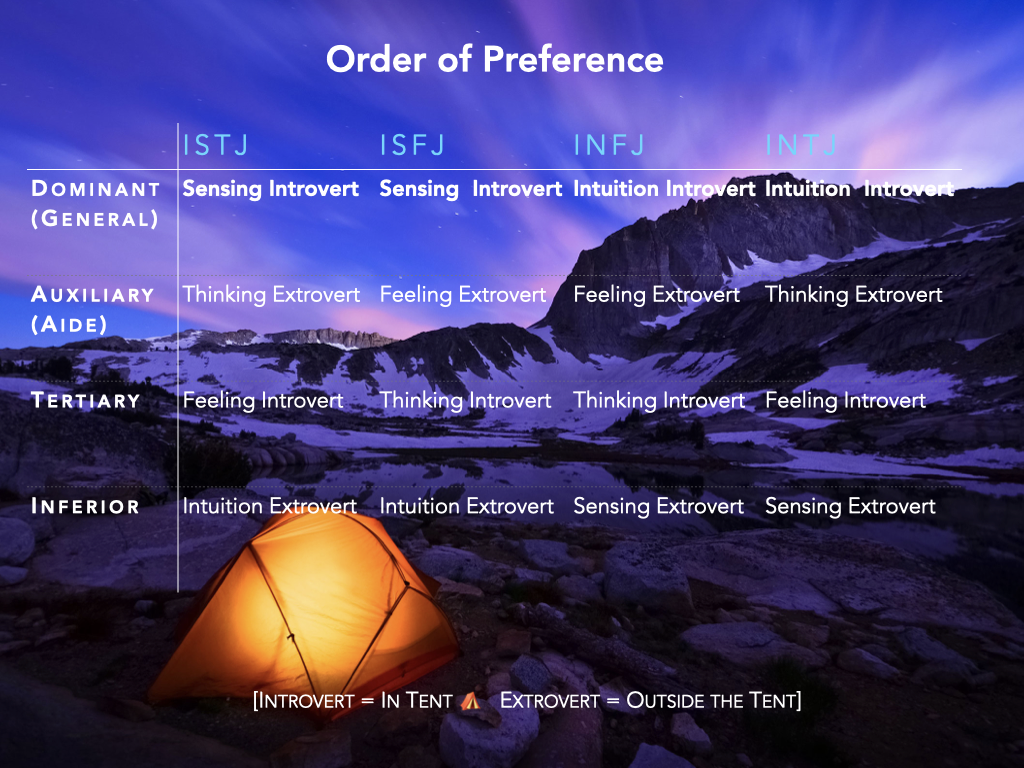
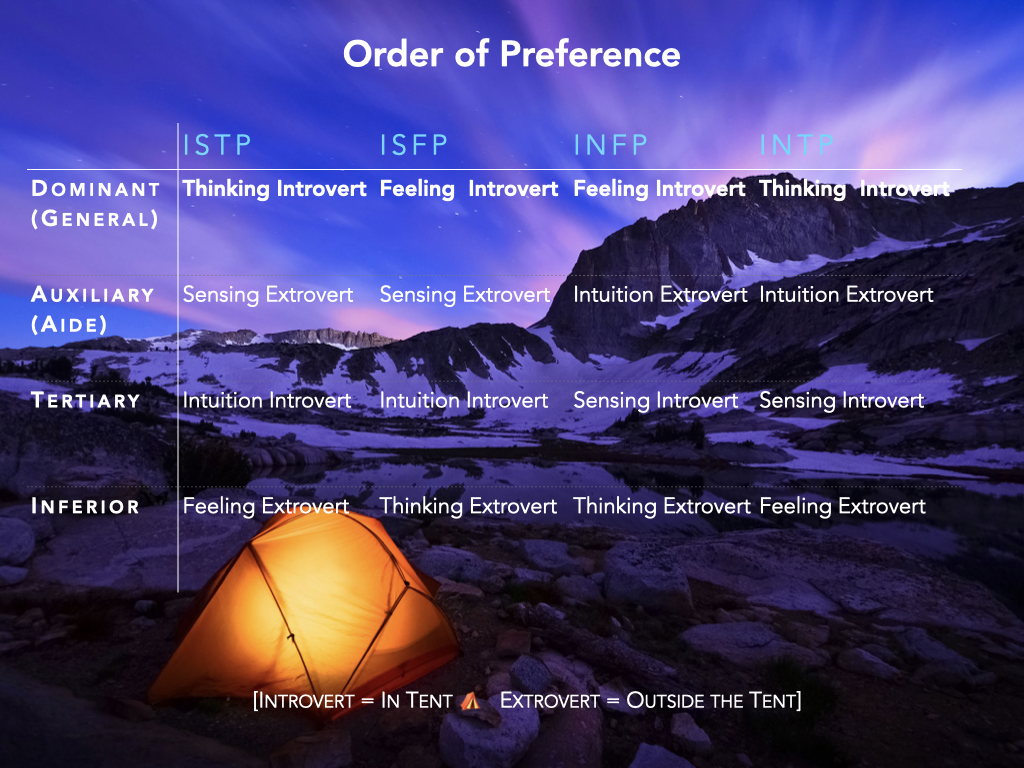
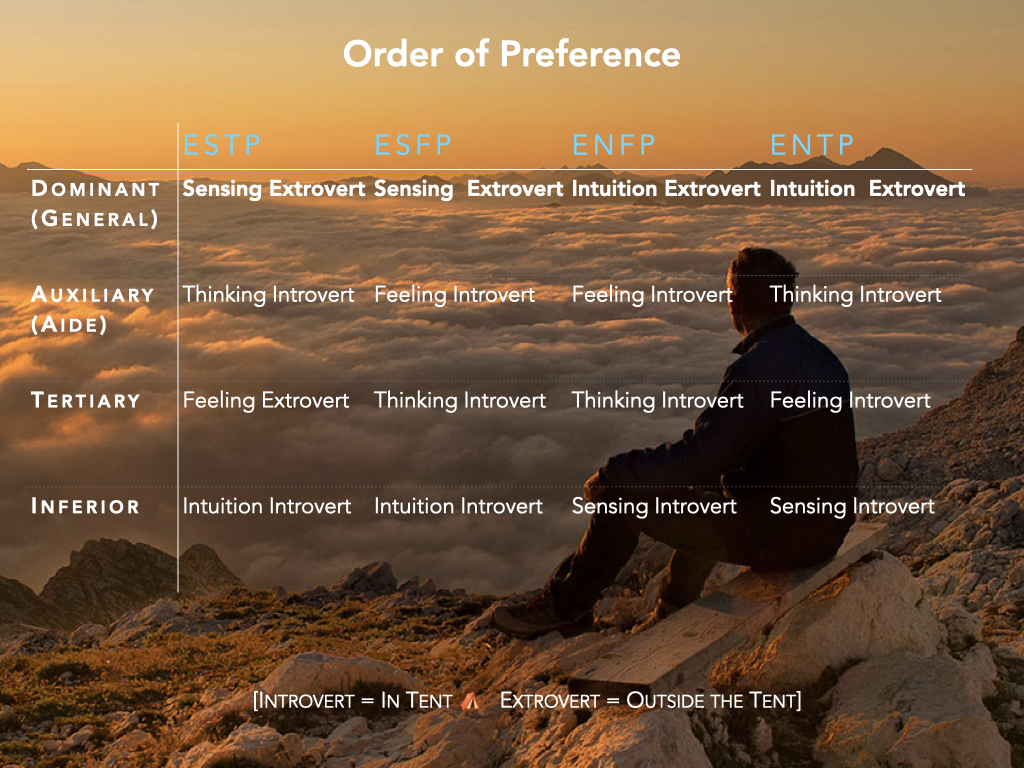
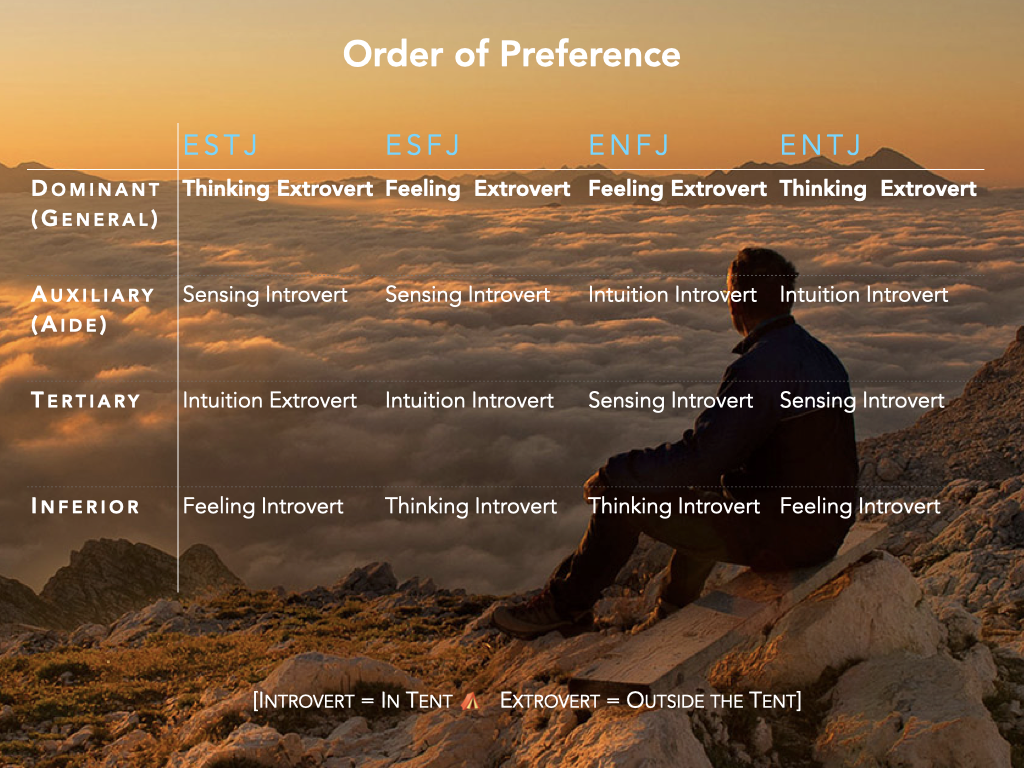
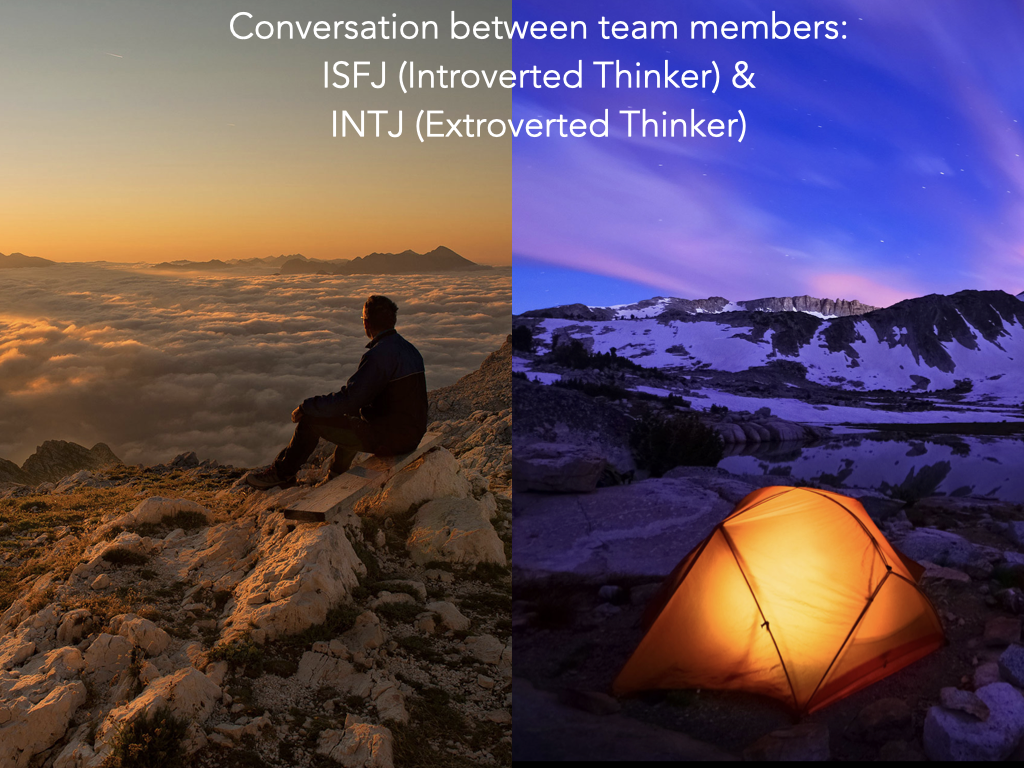


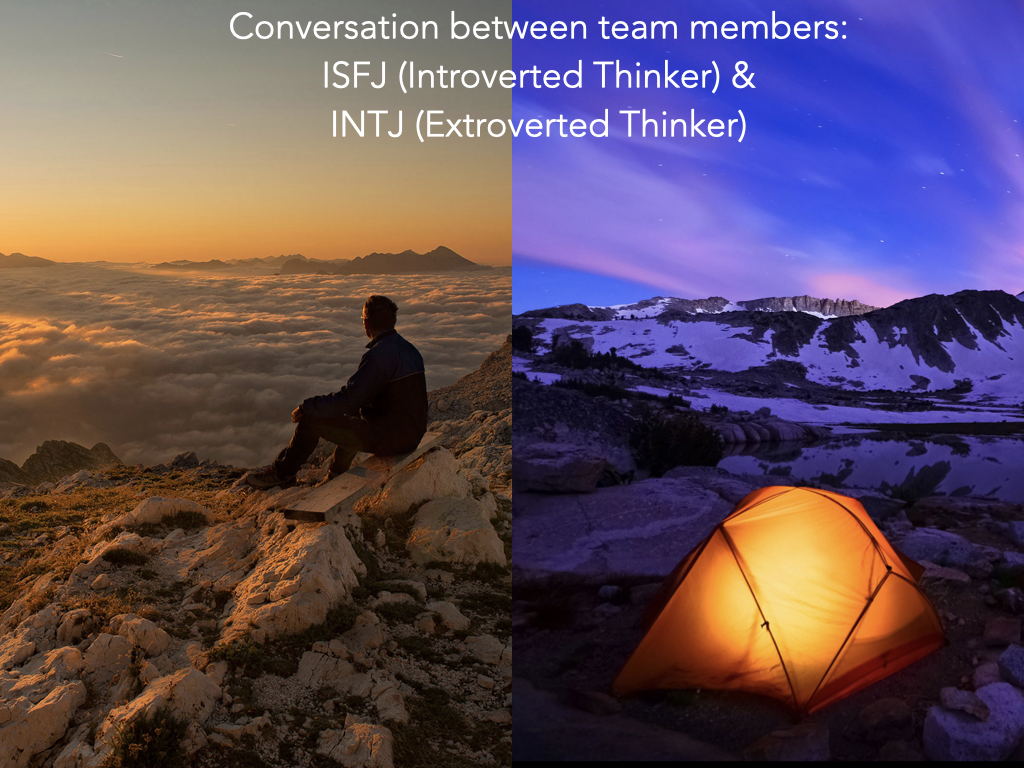
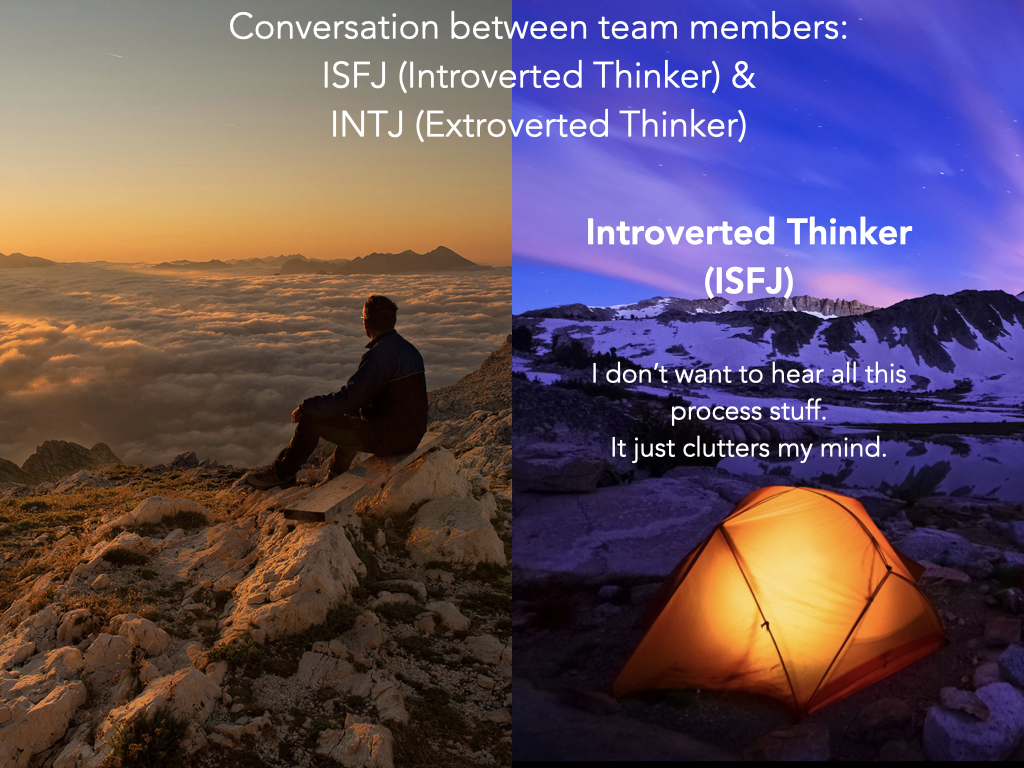

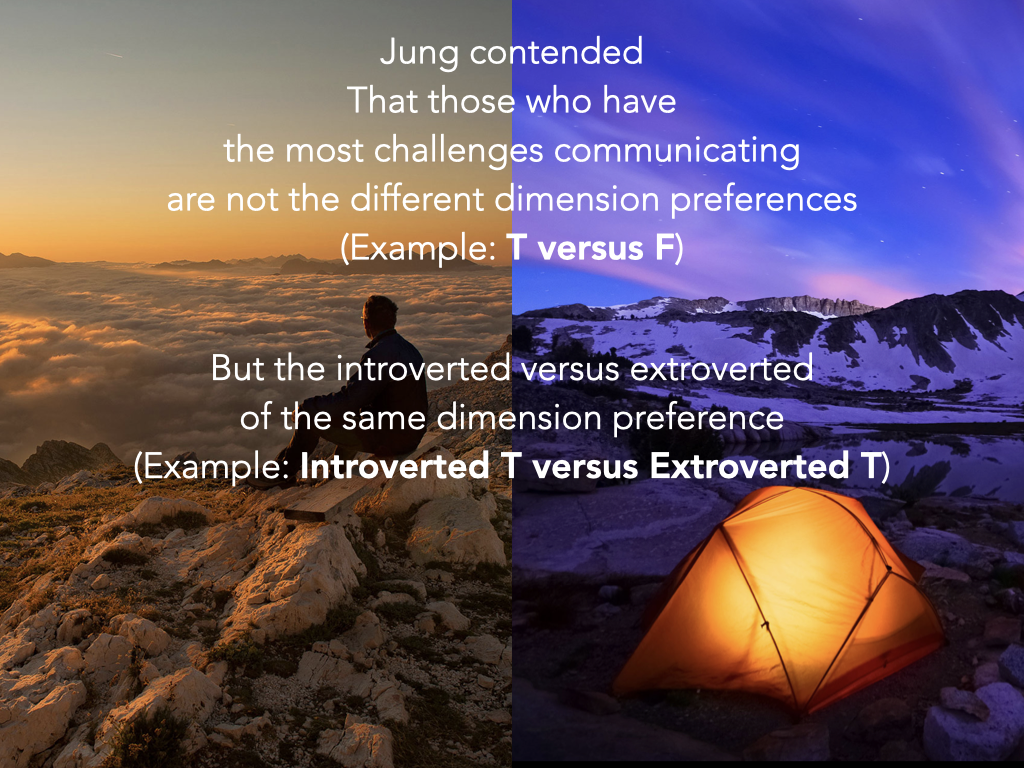
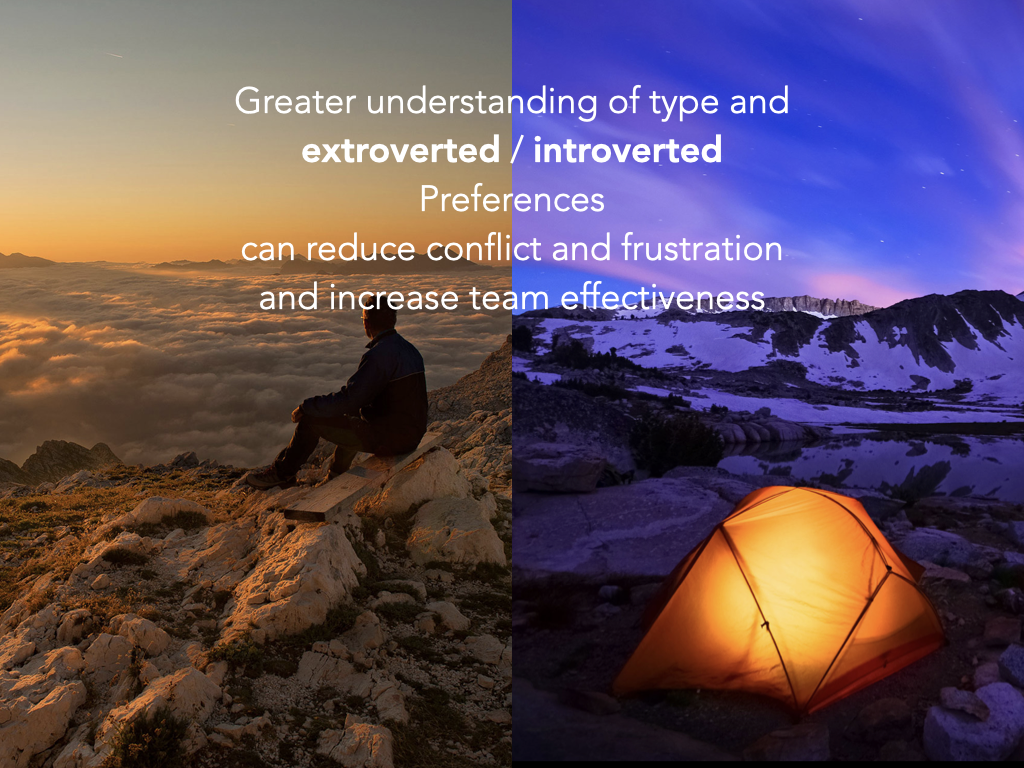
Who’s In Your Tent?
What Are Your Type Preferences For Effective Analysis and Decisions?


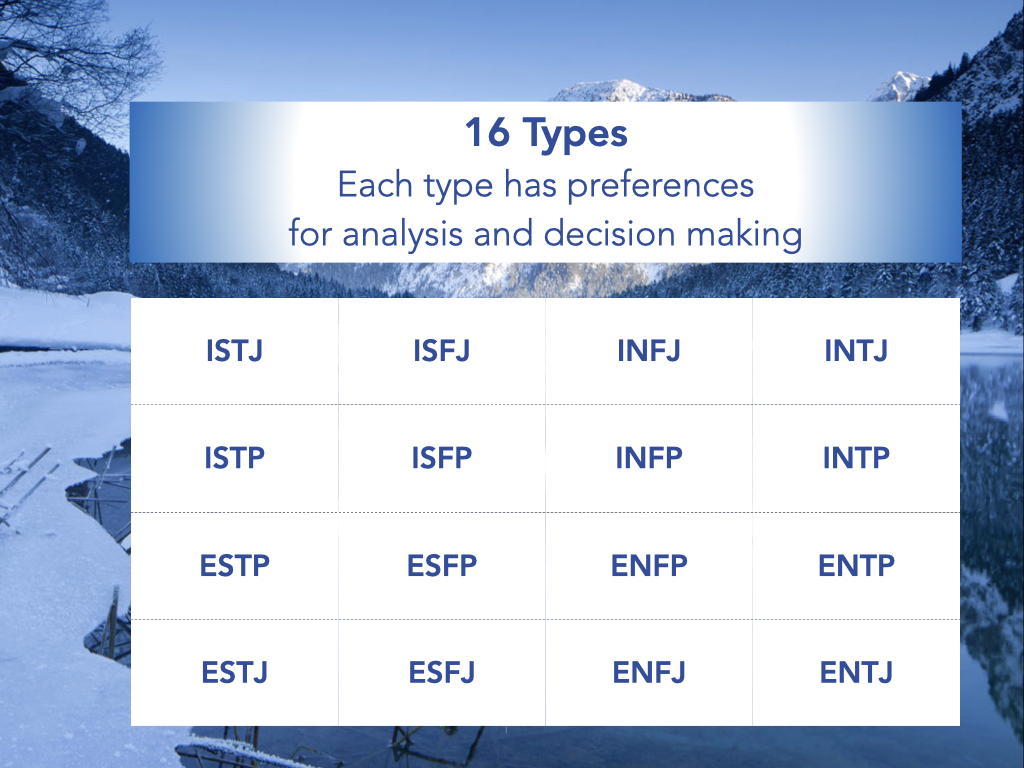
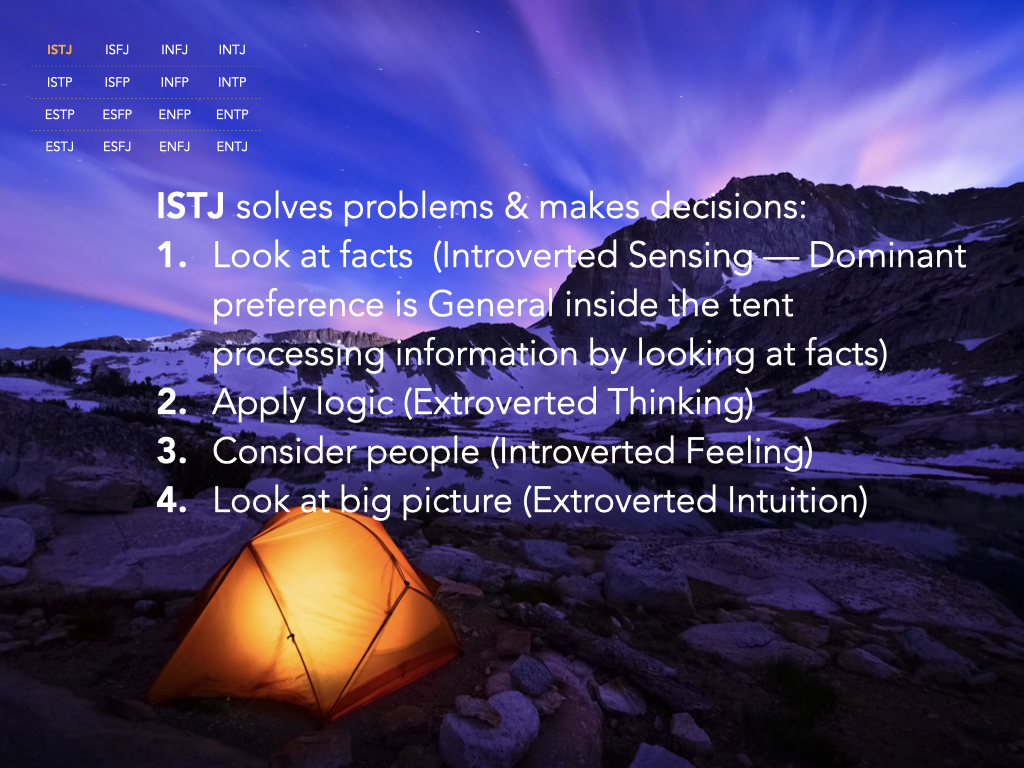
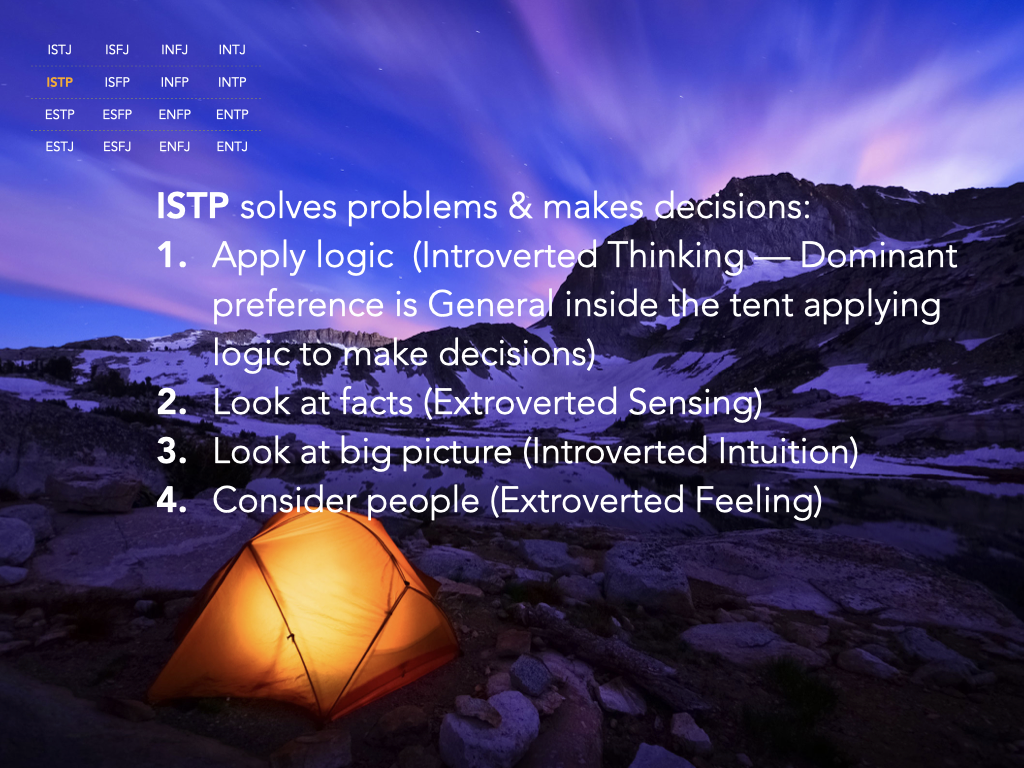


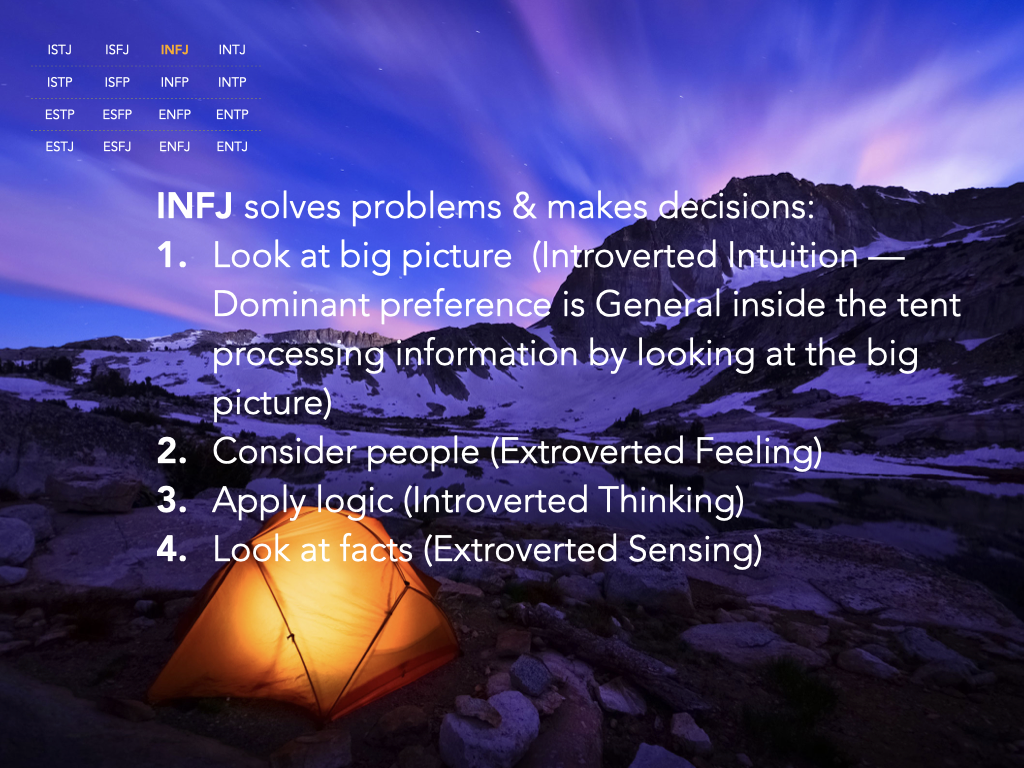
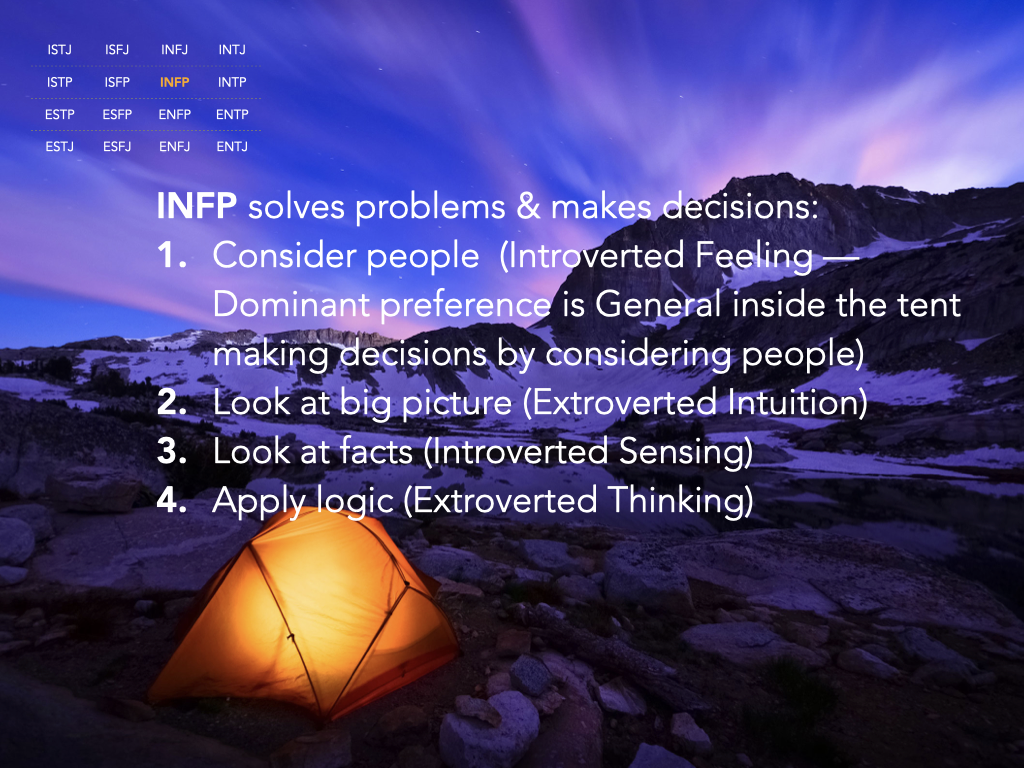
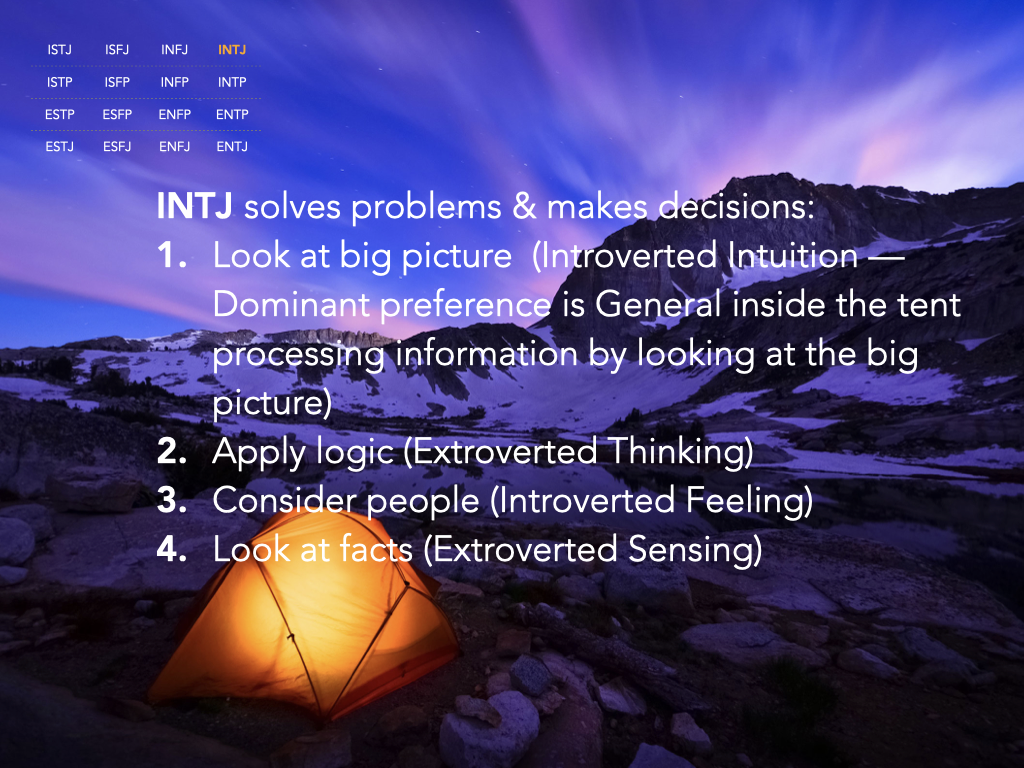
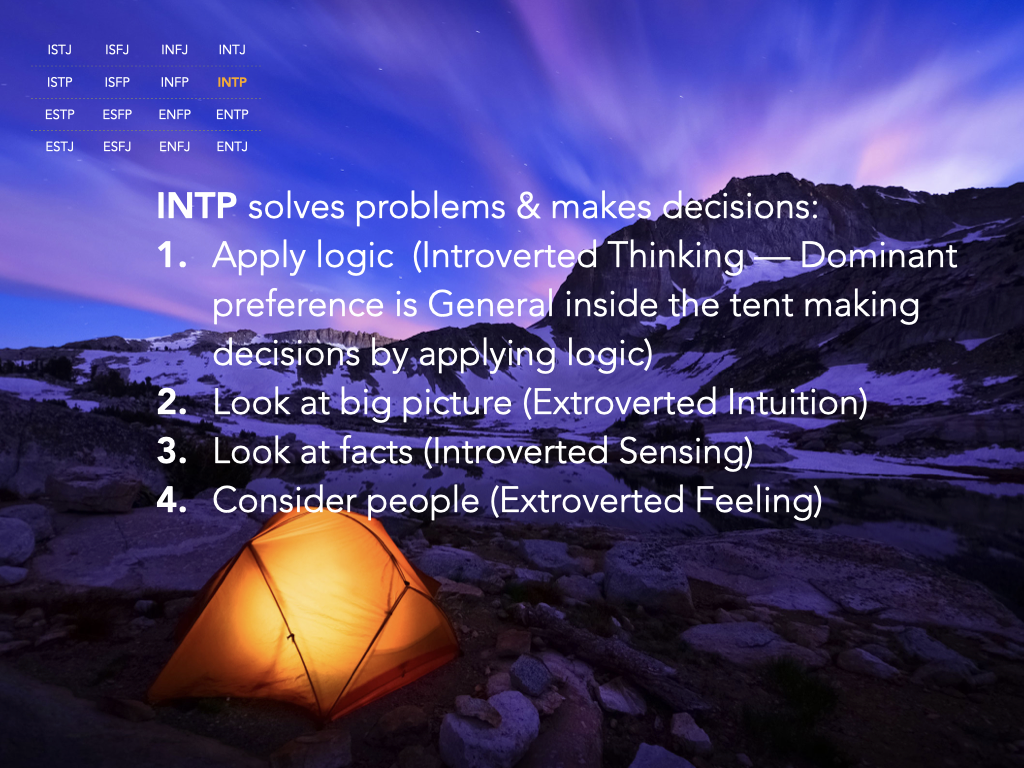
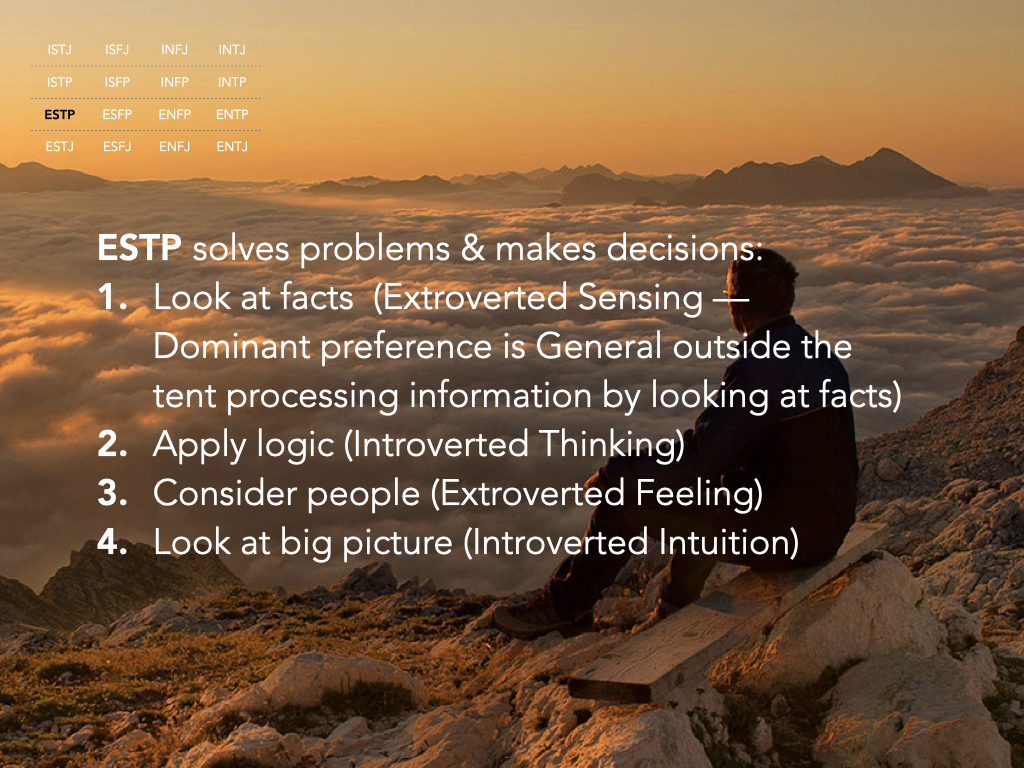




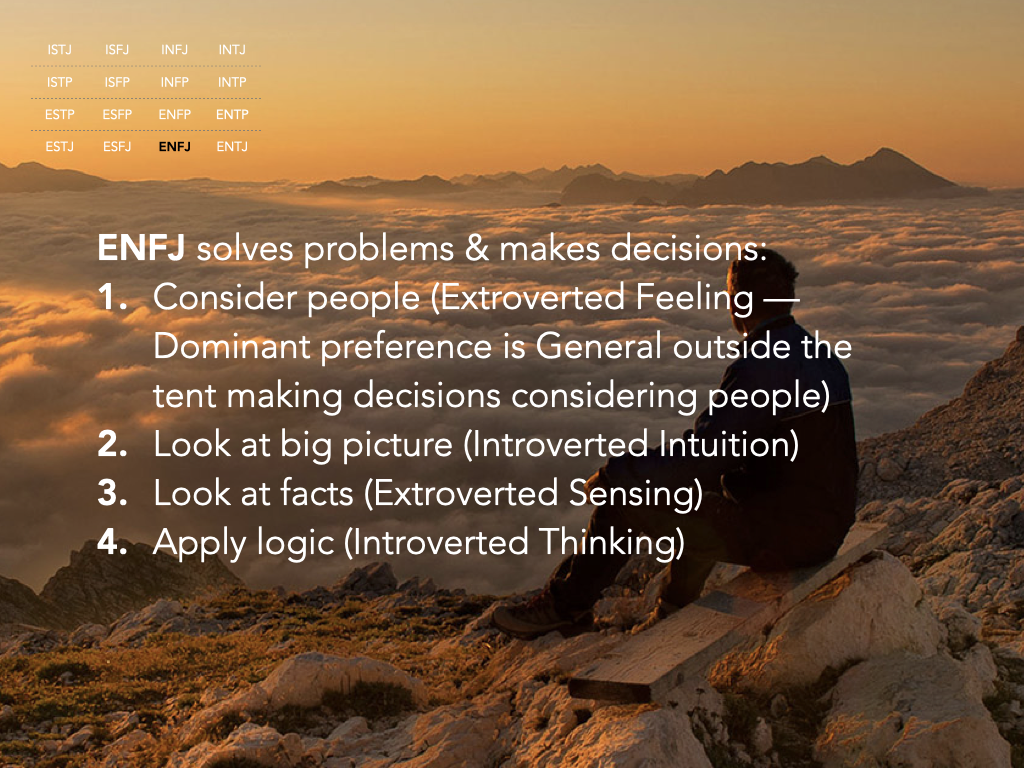
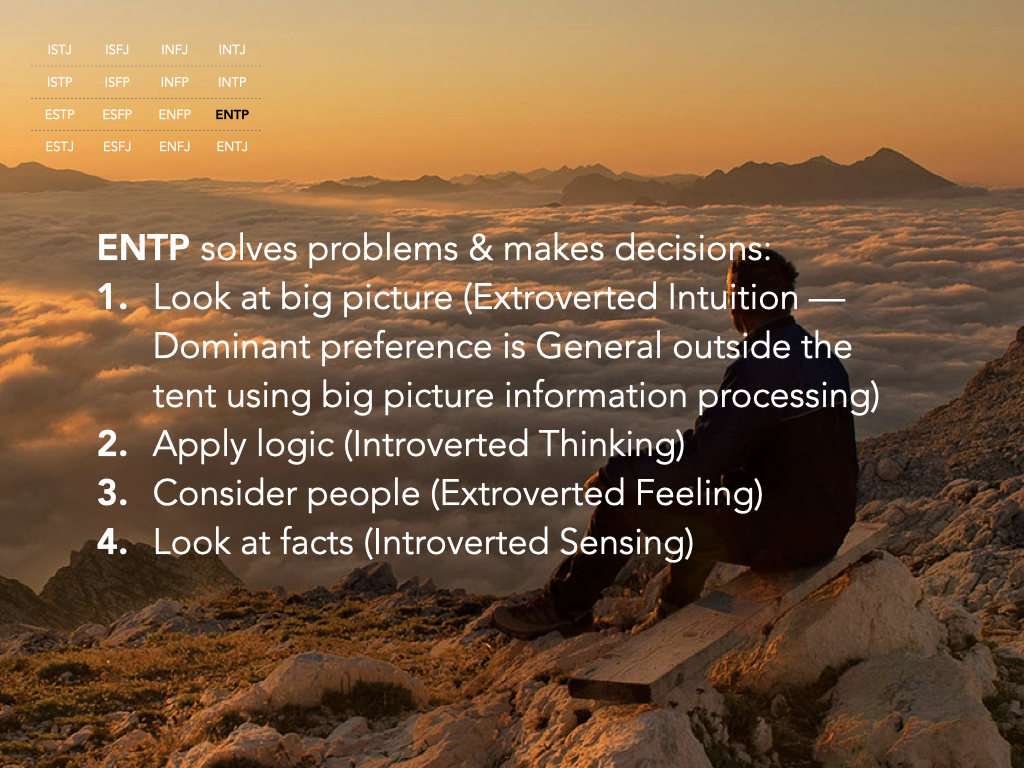

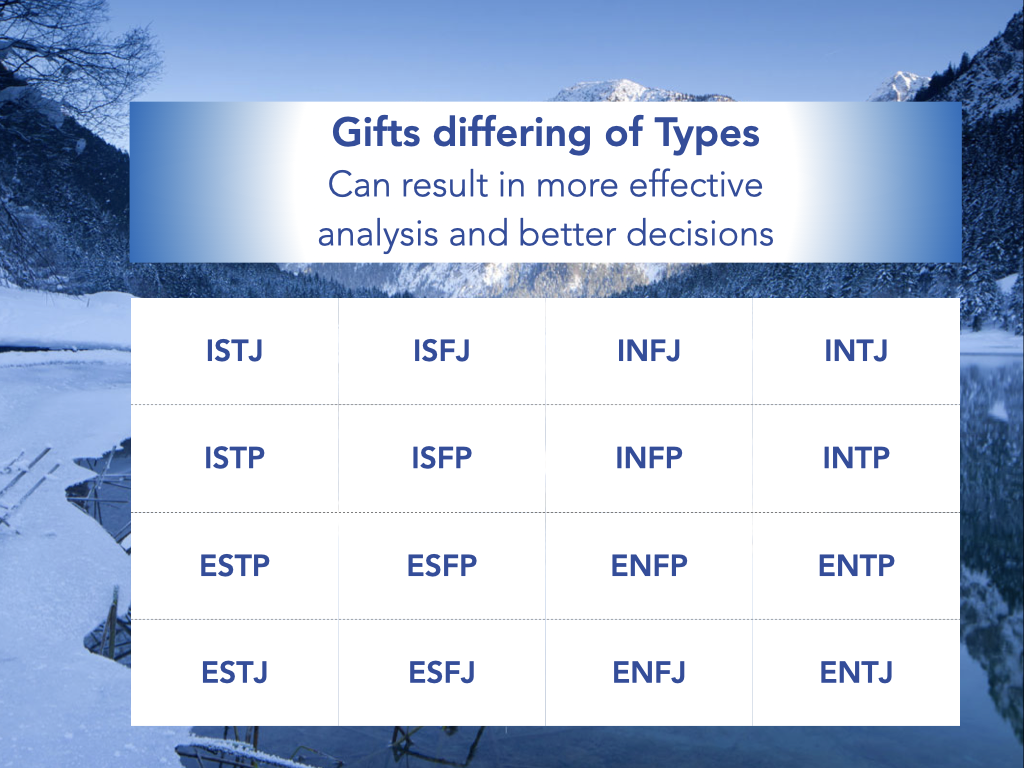


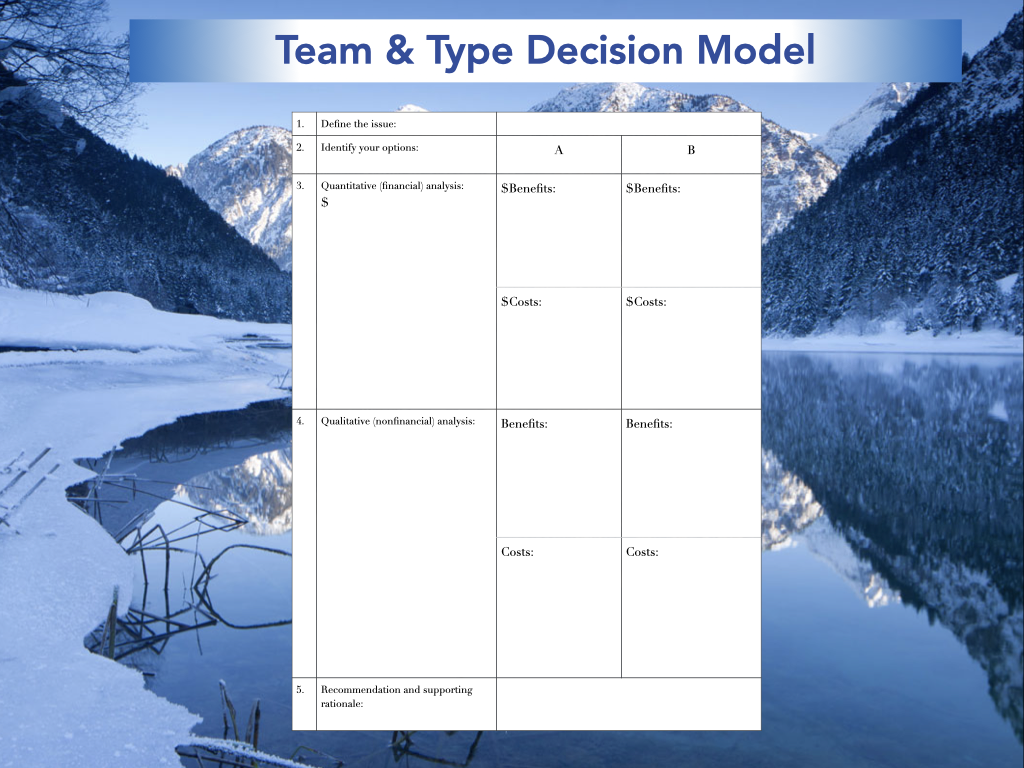

Teams & Type Effective Analysis and Decision Model
For your convenience, below is the Team and Type Decision Model to streamline your team analysis and decision making process. Using this model provides the opportunity for a process that permits all team members to feel they are being heard, that their viewpoints have value to the team, that they are making a contribution to the analysis and decision making process.
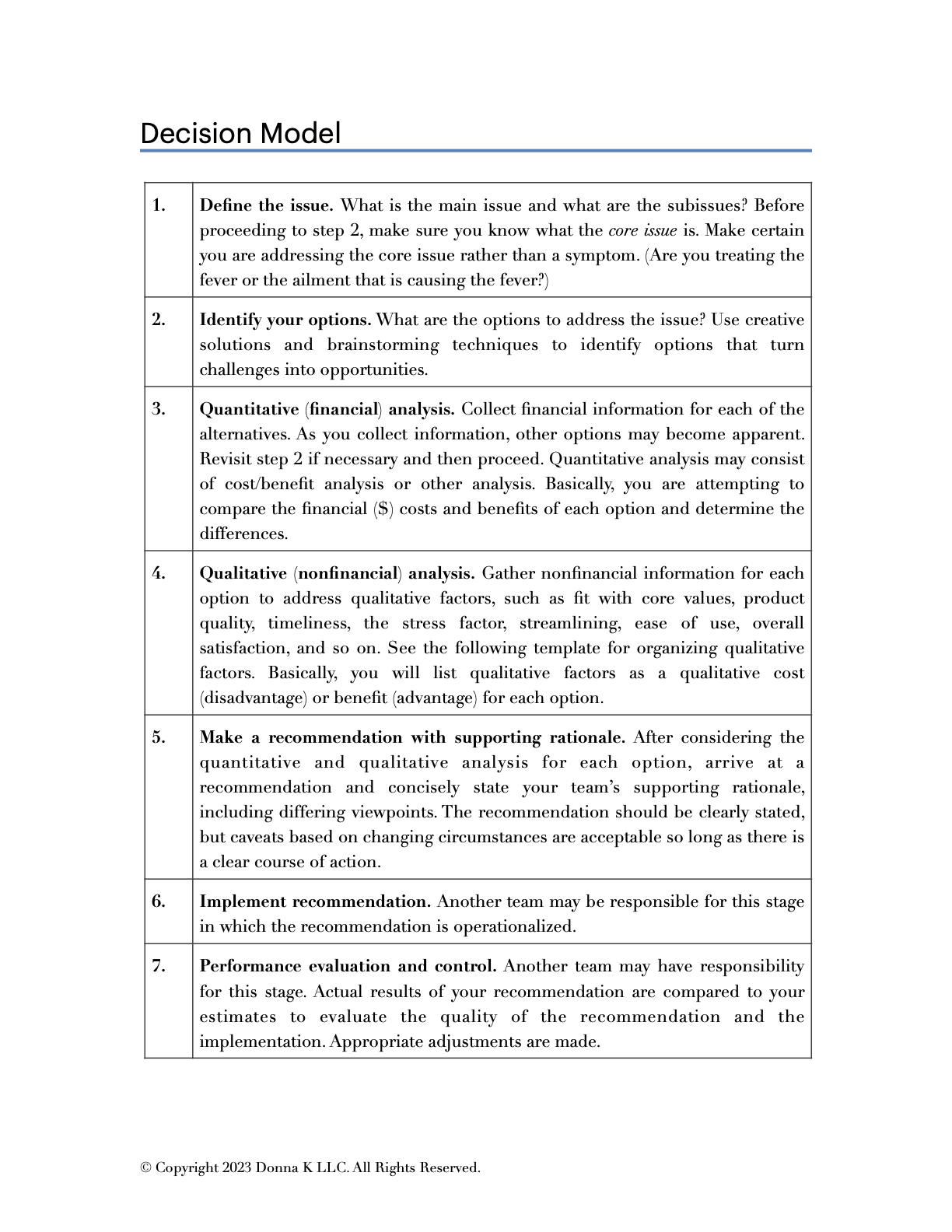

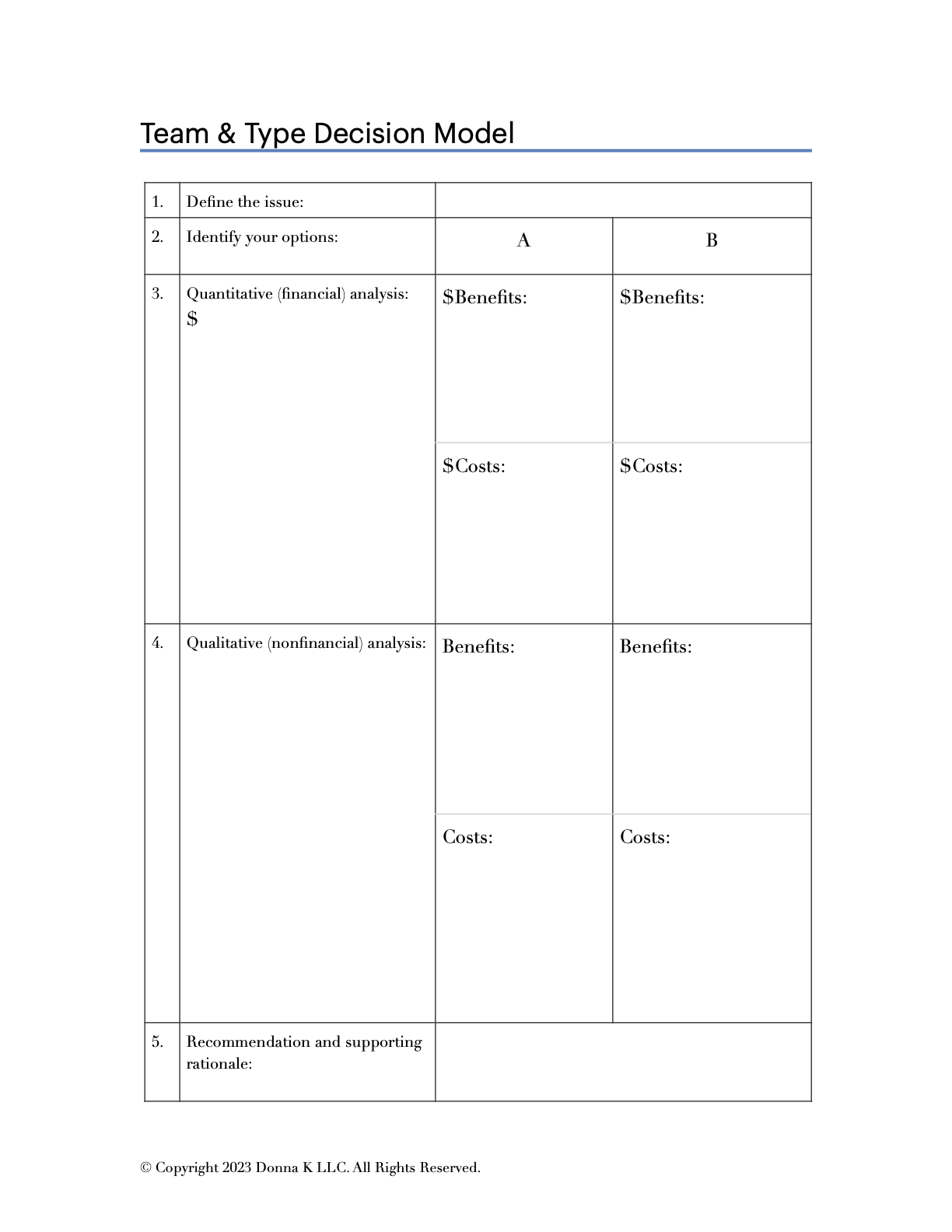
If you found Teams & Type fascinating and
would like to learn more or would like to request assistance with Teams & Type,

